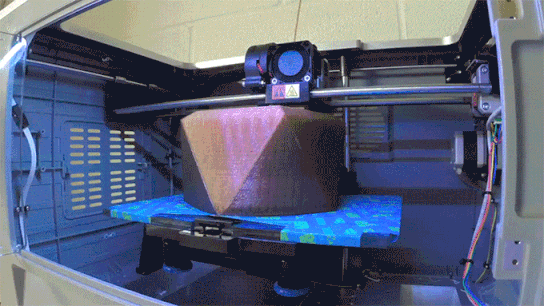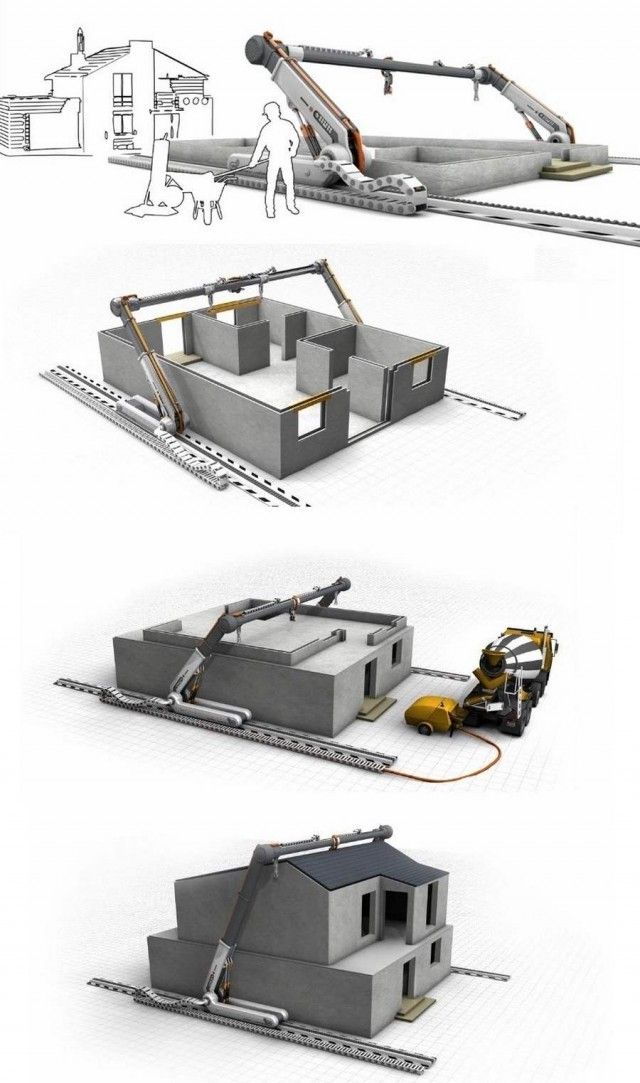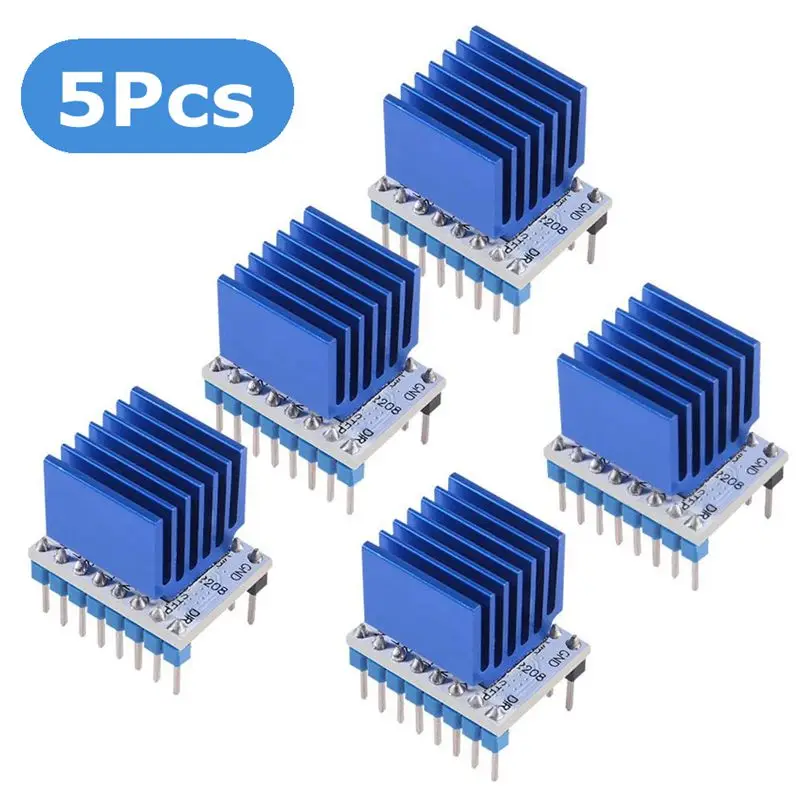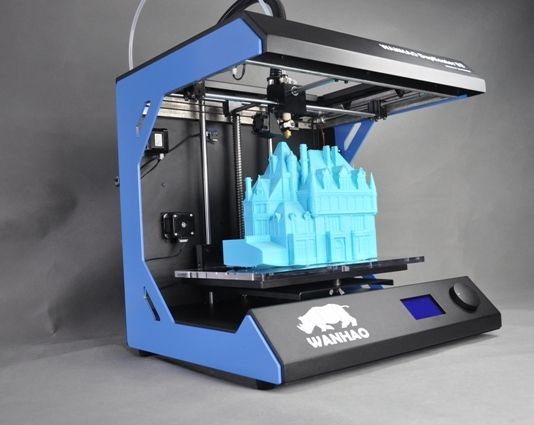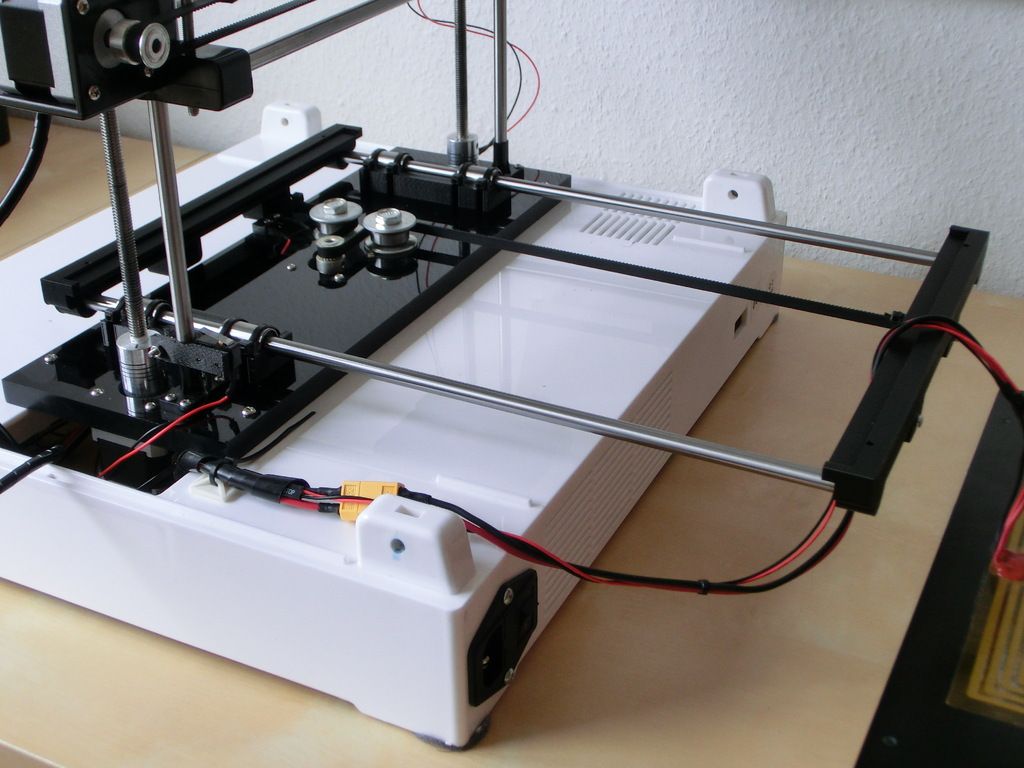Best 3d printer for jewelry
7 Best 3D Printers For Jewelry Making & Casting (2022 Update)
- Last Updated: December 20, 2022
- Pat Nathaniel
Whether you’re starting a new hobby or a new business, 3D printing jewelry is an exciting project to take on.
A few clicks and some resin, and you magically get a completely customized piece of fine jewelry – it’s like alchemy is finally real!
At this point you want to make your dream a reality. We’re going to take a dive into the different printers you have as options, and then we’ll get into some things you need to know about jewelry making so you’re well-equipped to print your first piece.
Elegoo Saturn 2 8K
Build volume: 219 x 123 x 250 mm
Get Discount Now
Check Latest Price
Phrozen Sonic Mini 8K
Build volume: 165 x 72 x 180 mm
Get Discount Now
Check Latest Price
Peopoly Moai
Build volume: 130 x 130 x 180 mm
Check Latest Price
Table of Contents
- Top 3D Printers For Jewelry At A Glance
- 1.
Phrozen Sonic Mini 8K (Best Choice)
- 2. Formlabs Form 3+ (Best Print Quality)
- 3. Phrozen Sonic Mini 4K (Best Budget)
- 4. Elegoo Saturn 2 8K (Best Value)
- 5. Peopoly Moai (Premium Choice)
- 6. Creality Ender 3 Pro (Best FDM)
- 7. Solidscape S325 (Best Professional Choice)
- 1.
- How Does 3D Printing Jewelry Work?
- Process of 3D Printing Jewelry
- Available 3D Printing Processes
- Should I Use FDM or SLA for Jewelry?
- FDM
- SLA
- Why 3D Print Jewelry?
- Conclusion
Top 3D Printers For Jewelry At A Glance
We’ve researched over 20 different 3D printers for jewelry making for our own business and below are our top 7.
- Phrozen Sonic Mini 8K (Best Choice)
- Formlabs Form 3+ (Best Print Quality)
- Phrozen Sonic Mini 4K (Best Budget)
- Elegoo Saturn 2 8K (Best Value)
- Peopoly Moai (Premium Choice)
- Creality Ender 3 Pro (Best FDM)
- Solidscape S325 (Best Professional Choice)
1.
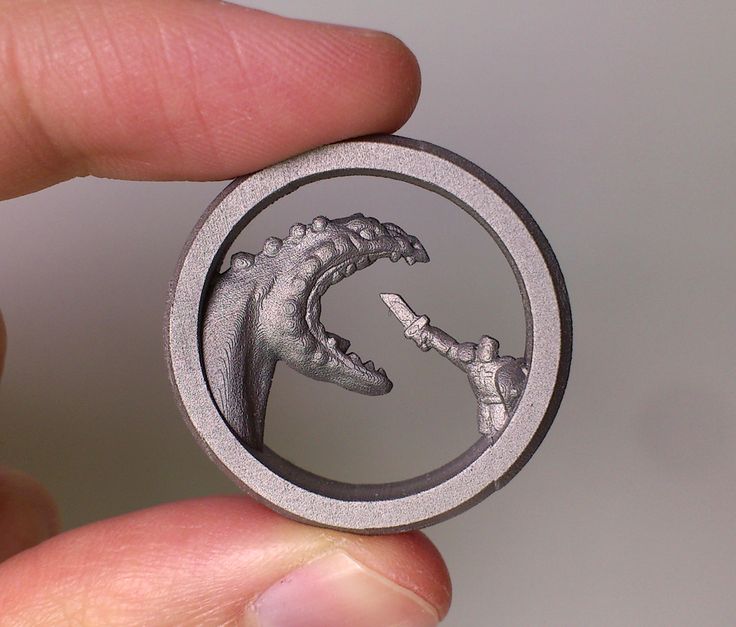 Phrozen Sonic Mini 8K (Best Choice)
Phrozen Sonic Mini 8K (Best Choice) 3D Printer Type: LCD | Materials: 405 nm Resin | Build Volume: 165 x 72 x 180 mm
Easily the best 3D printer out there for making jewelry at a consumer level is the Phrozen Sonic Mini 8K. Phrozen shows up on this list a few times, and the only reason I can give for this is that their team is insanely good at making high-detail 3D printers.
The Phrozen Sonic Mini 8K is built around its crown jewel: an 8K monochrome LCD screen. This part makes the machine capable of printing models with 8K pixel resolution, which means prints can have a ton of detail If this doesn’t spark your interest, then I don’t know what will; just look at the prints made by this machine:
Source: Youtube Adam Savage’s TestedOn top of the high LCD resolution of the Phrozen Sonic Mini 8K, the printer also brings a terrific X/Y printing resolution of just 22 µm, or 0.022 mm. This is about as precise as you can get today, and, for reference, the Phrozen Sonic Mini 4K has a precision of only 35 µm (not as good).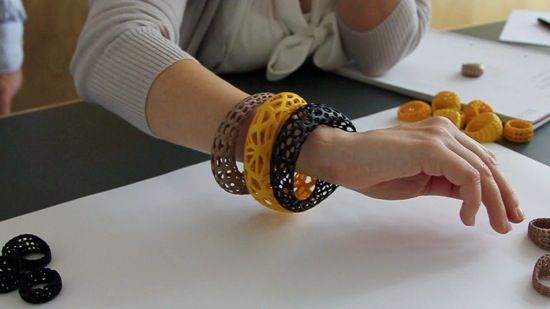
Sadly, the price you pay for this incredible print quality comes in the form of print space. Moreover, as indicated by the “Mini” in the name, the Phrozen Sonic Mini 8K has a relatively small build space of only 165 x 72 x 180 mm. While this limits you to printing only small models, it shouldn’t be a problem for making jewelry.
So, if you want an overall beast of a resin 3D printer that can make jewelry pieces more detailed than your wildest dreams, I strongly recommend the Phrozen Sonic Mini 8K.
- 8K printing resolution
- Amazing X/Y printing precision
- Sturdy frame
- Touchscreen user interface
- Requires 8K resin for maximum print quality
- Somewhat small print space
Get Discount (Official Store)
Check Latest Price
2.
 Formlabs Form 3+ (Best Print Quality)
Formlabs Form 3+ (Best Print Quality) 3D Printer Type: LFS | Materials: Resins | Build Volume: 145 x 145 x 170 mm
When it comes to print quality with SLA 3D printers, it’s hard not to think of Formlabs. Formlabs practically invented consumer-level resin 3D printing, and the Form 3+ is one of their latest innovations, bringing top-notch print quality to the field.
The Form 3+ replaced the Form 2, which used to be on our list until we realized the former is much more precise. Moreover, Form 3+ has an X/Y printing resolution of just 25 µm, almost the same as the Phrozen Sonic Mini 8K. Additionally, the overall quality of prints made on the Form 3+ is immaculate, with high-detail prints coming out like this:
But my favorite part about the Formlabs Form 3+ isn’t even the crazy print quality, but its reliability. Formlabs goes above and beyond to make sure that their machines are the most reliable on the market, and they’ve done a terrific job with Form 3+. Loaded with sensors, the Form 3+ basically never fails, and if it does, it lets you know the exact issue!
Loaded with sensors, the Form 3+ basically never fails, and if it does, it lets you know the exact issue!
Additionally, using the Form 3+ is a delight due to the full-color touchscreen display onboard the printer that runs a well-designed and easy-to-use interface. It’s also important to note the print size on Form 3+: a solid 145 x 145 x 185 mm. Not the biggest around, but certainly large enough to handle any and all jewelry prints.
Unfortunately, Formlabs Form 3+ has some issues when it comes to compatibility. For one, Formlabs makes it difficult to modify or upgrade the machine outside of their ecosystem. And through RFID chips in the resin tanks, they prevent you from using 3rd-party resins.
- Insanely high print quality
- Great printing precision
- Sturdy frame
- Easy-to-use touchscreen interface
- Can’t use 3rd-party resins
- Doesn’t allow for upgrades or modifications
Check Latest Price
3.
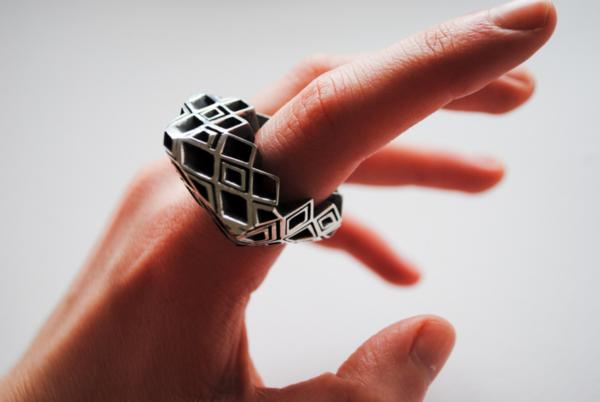 Phrozen Sonic Mini 4K (Best Budget)
Phrozen Sonic Mini 4K (Best Budget) 3D Printer Type: LFS | Materials: 405 nm UV Resin | Build Volume: 134 x 75 x 130 mm
If you want exceptional print quality without breaking the bank then the new and improved Phrozen Sonic Mini 4K is for you.
Compared to other affordable resin 3D printers like the Anycubic Photon S and Elegoo Mars 2 Pro, we found the printing quality superior in the former. The XY layer resolution of the Mini 4K is 35 microns vs the 50 microns of those two printers.
As you know, in the world of television and mobile phones, 4K screens produce high-quality images. Similarly, thanks to the 4K LCD screen with the Mini 4K, you’ll get a better print resolution.
In all fairness, the differences between prints from the three printers weren’t pronounced. But in detail-packed jewelry, you’ll notice the power of the 4K LCD.
Source: Youtube Uncle JessyThe Sonic Mini 4K also prints faster – one layer in 2 seconds fast (although the newer models of the Photon and Mars are keeping up).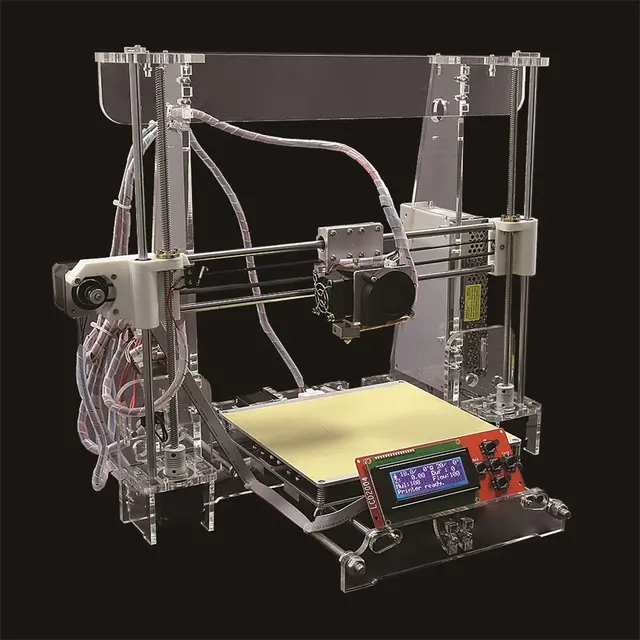
If you want a beginner-friendly resin 3D printer for jewelry, then the Mini 4K is for you. It’s that easy to use. Just plug in, level, and start printing. The default settings in Chitubox work without any adjustments although you’ll have to tweak it for certain designs.
In terms of printer noise, the Sonic Mini 4K is a bit noisier than the original Sonic Mini. The noise mainly comes from Mini’s Z-axis stepper motor during the changing of layers.
All in all, for 3D printing jewelry and miniatures you can’t go wrong with the Sonic Mini 4K. It excels where print details are a must.
- Exceptional print quality for super fine details
- Easy to level the bed
- Built tough
- Touch screen is very responsive
- Beginner-friendly
- Possible flex in the build plate arm for large print areas
- Screen can get easily damaged
Get Discount (Official Store)
Check Latest Price
4.
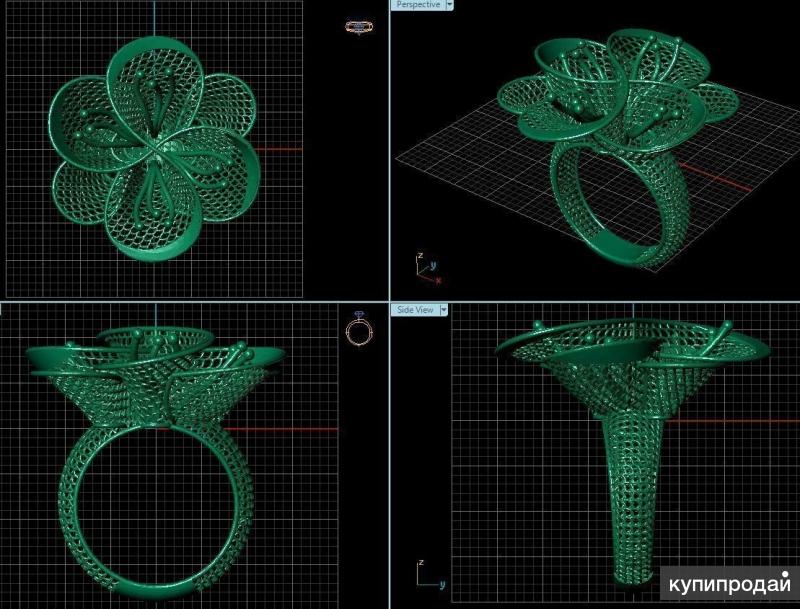 Elegoo Saturn 2 8K (Best Value)
Elegoo Saturn 2 8K (Best Value) 3D Printer Type: MSLA | Materials: 405 nm UV Resin | Build Volume: 219 x 123 x 250 mm
Another 8K printer on this list is the Elegoo Saturn 2 8K, which, in my opinion, is the best bang for your buck when it comes to printing high-detail jewelry.
The Saturn 2 is made by Elegoo, one of the most popular manufacturers of budget-friendly resin 3D printers. And the Saturn 2 definitely is budget-friendly, offering 8K printing capabilities for less than $600!
As an 8K 3D printer, the Elegoo Saturn 2 uses an 8K pixel resolution LCD screen that allows for very high-detail prints. And parts are very precise because the Elegoo Saturn 2 has an X/Y resolution of 28.5 microns. This isn’t as good as the Formlabs Form 3+ or Phrozen Sonic Mini 8K, but it’s still very precise and a great deal considering the price of the Saturn 2.
With the Saturn 2, you can make some super detailed 8k-resolution prints, like the one seen below:
Plus, the Saturn 2 gives you a decent amount of print space, totaling 219 x 123 250 mm.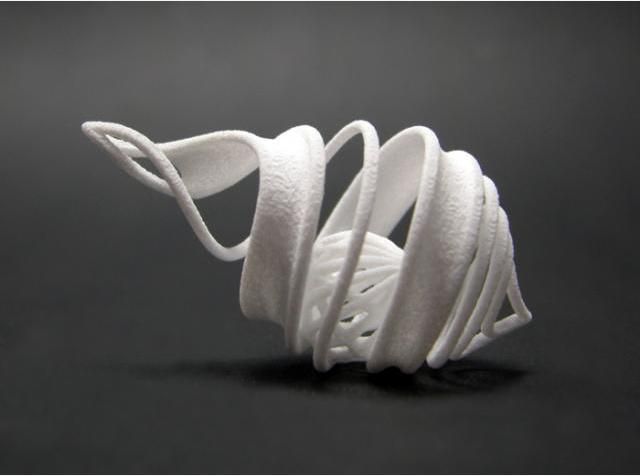 This is more than enough for typical jewelry prints and will allow you to print multiple rings or necklace pendants at once, no problem!
This is more than enough for typical jewelry prints and will allow you to print multiple rings or necklace pendants at once, no problem!
Another thing I love about the Elegoo Saturn 2 is the print speed: up to 70 mm/hour. This is very fast and means you can pump out more jewelry projects compared to other printers, which typically have a max speed of 40-60 mm/hour.
So, if you want to print large without sacrificing print quality or detail, the Elegoo Saturn 2 8K is the perfect option. And it won’t break the bank!
- Great bang for your buck
- 8K printing resolution
- Terrific printing precision
- Fast print speed
- Large build space
- More prone to issues with the VAT
- Not as precise as other 8K printers
Get Discount (Official Store)
Check Latest Price
5.
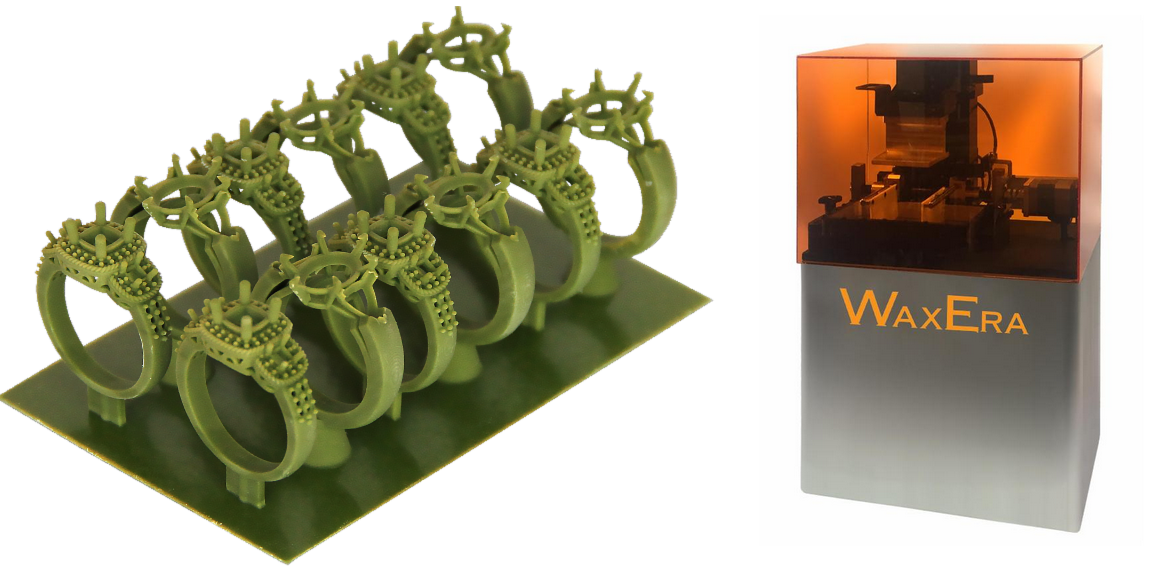 Peopoly Moai (Premium Choice)
Peopoly Moai (Premium Choice) 3D Printer Type: SLA | Materials: Any Resin Designed for SLA Printers | Build Volume: 130 x 130 x 180 mm
The logical next printer to look at on this list is the Peopoly Moai. Everything you love about SLA 3D printers at a more reasonable price.
This checks the same boxes as Form 2; it’s super accurate, quiet to operate, easy to use, and you can easily print using a resin bath. The difference is that this machine is a lot less expensive, and the resin is also less expensive. The other thing that’s great about the Moai is it allows 3rd party resin!
Source: Youtube Teaching TechThis machine isn’t as polished or sophisticated as the Formlabs’ 3D printer, but it is no stick in the mud, either. It will deliver great accuracy and precision for a fair price. Peopoly’s Moai resin 3D printer is an excellent choice for beginners who have the cash.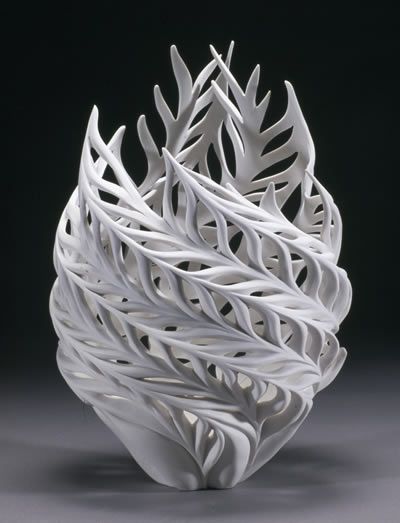 It’s also the perfect choice for people who like to experiment and tinker.
It’s also the perfect choice for people who like to experiment and tinker.
Since it’s open-source and allows 3rd party resins, you have a lot of room to test the boundaries of this printer.
We recommend the Moai as the best jewelry 3D printer for beginners and it’s equally friendly to limit-testers and experimenters.
- Compatible with 3rd party resins
- Robust assembly
- Great supporting documents
- Good value
- Beginner-friendly
- Assembly required
- Prints are sometimes messy
Check Latest Price
6.
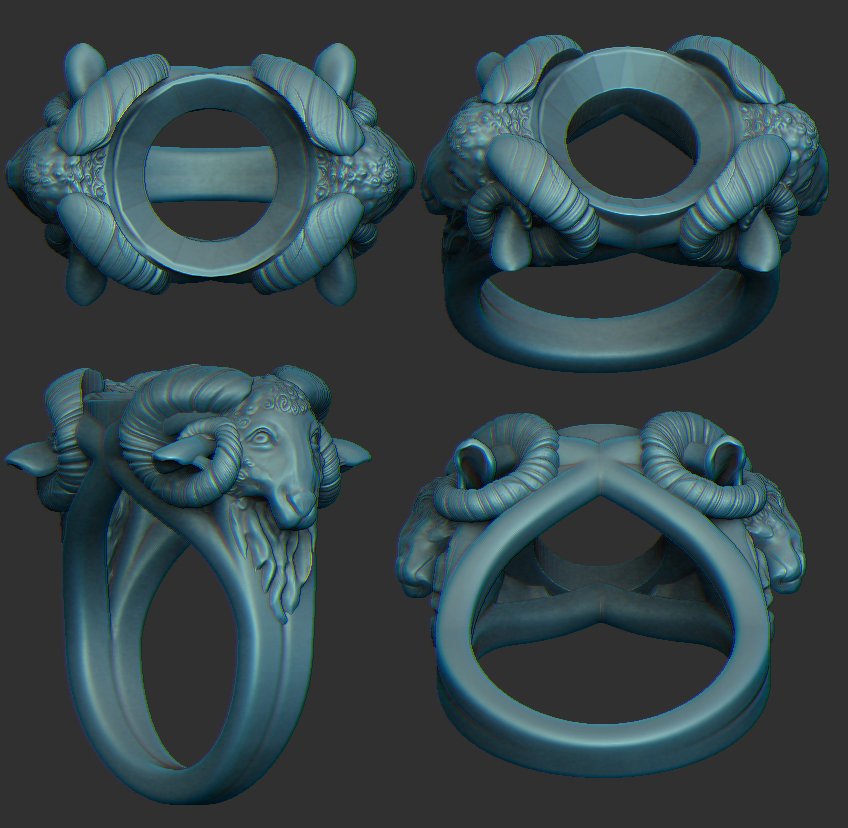 Creality Ender 3 Pro (Best FDM)
Creality Ender 3 Pro (Best FDM) 3D Printer Type: FDM | Materials: PLA, ABS, TPU & PETG | Build Volume: 220 x 220 x 250 mm
For a couple of hundred bucks, you can start learning how to make custom jewelry. The Creality Ender 3 Pro is not the most polished or glamorous printer, but it’s a workhorse.
A lot of people consider it the best FDM 3D printer for jewelry in its price category, myself included. What you get are reasonably accurate and quality prints (for a non-resin 3D printer). You can start learning the process and experimenting without breaking the bank.
The 3D printer is also really sturdy and durable.
If you’re not comfortable investing thousands into a 3D printer, the Creality Ender 3 Pro gives you the option to start small and see how passionate you are about the space.
Unlike the rest of the 3D printers in this list, since this is an FDM 3D printer you’re not pigeonholed to just using resins.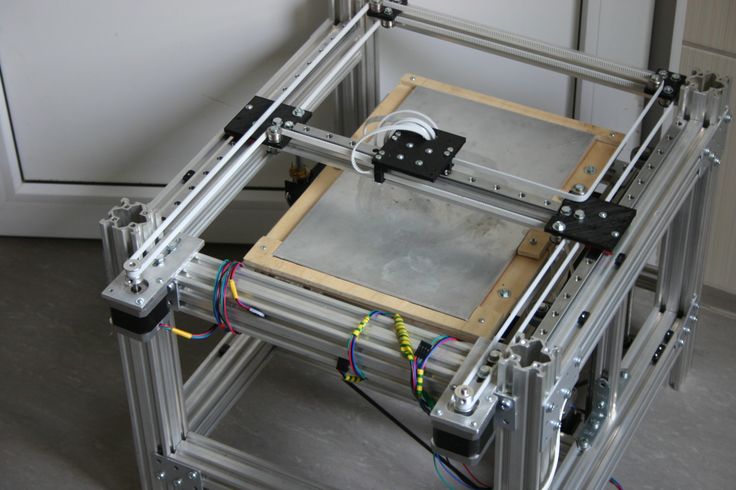 Sure, it’s not the best 3D printing tech for making jewelry, but it can do a ton of other stuff. You can enjoy the full range of freedom that comes with having an FDM printer.
Sure, it’s not the best 3D printing tech for making jewelry, but it can do a ton of other stuff. You can enjoy the full range of freedom that comes with having an FDM printer.
That said, FDM 3D printers print quality is noticeably less smooth and accurate than their resin 3D printer counterparts.
Admittedly, sometimes I break things just so I can 3D print replacements – and that’s something you can’t do with an SLA 3D printer.
- Very budget-friendly
- Robust machine
- Decent accuracy
- High-quality print potential
- Some reliability issues
- Assembly required
- Print bed is sometimes warped
Get Discount (Official Store)
Check Latest Price
7.
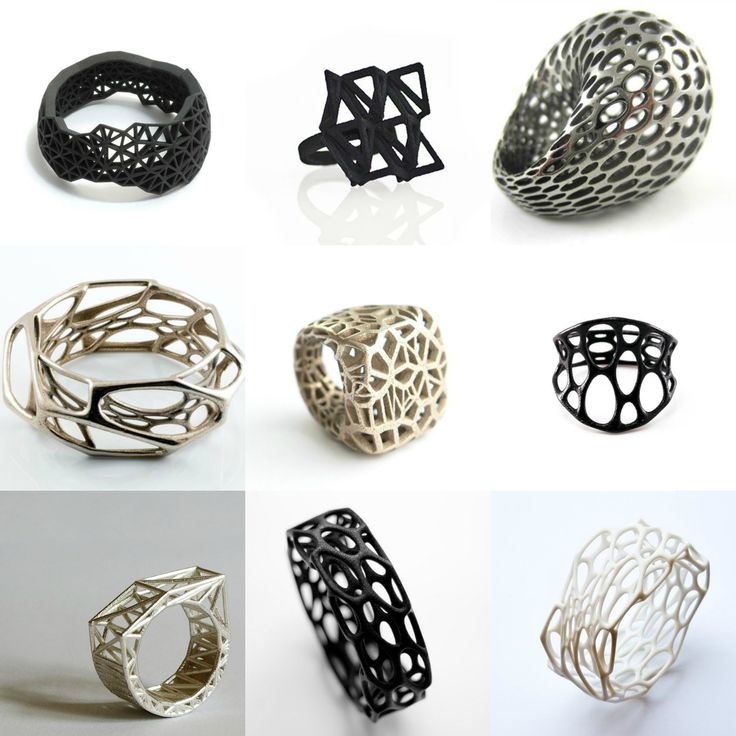 Solidscape S325 (Best Professional Choice)
Solidscape S325 (Best Professional Choice) 3D Printer Type: Material Jetting | Materials: Midas Castable Material & Melt Dissolvable Support | Build Volume: 152 × 152 × 101 mm
Our last option for you is the Solidscape S325. This printer is a bit more professional than the other options on this list. As such, it costs a good bit more, but it also offers a lot more print quality, reliability, and other benefits!
The S325 is a professional 3D printer that’s meant specifically for making jewelry molds. In fact, the S325 doesn’t actually use traditional SLA printing technology; instead, it uses material jetting, a different type of 3D printing.
With material jetting, the Solidscape S325 can print in wax materials, which traditional SLA 3D printers don’t work with. Being able to print wax is super useful for jewelry 3D printing because it makes the mold-making process a breeze.
And, despite the different technology, the Solidscape S325 still yields a ton of detail in 3D-printed jewelry pieces.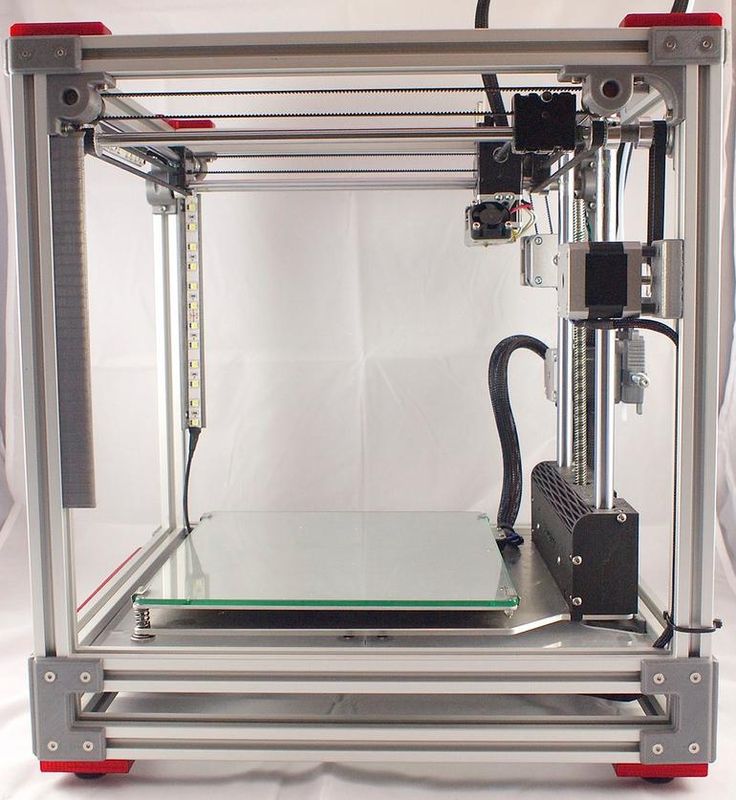
What I personally find most fascinating about this printer is its support abilities. Moreover, the Solidscape S325 prints support, generated by its proprietary 3D slicer software, using a material that dissolves post-printing. As such, you can print very intricate models, with overhangs, without worrying about supports hurting the visual quality of the model.
So, if you want to get into 3D printing jewelry professionally or make a business out of it, then you’ll need a printer like the Solidscape S325 to ensure high-quality prints in materials specifically meant for jewelry.
- Can print in wax and other special materials
- Dissolvable support capabilities
- Very reliable
- High print quality
- Proprietary 3D slicer software
- Tons of customer support
- Very expensive
- Requries consultation with a sales representative
Check Latest Price
How Does 3D Printing Jewelry Work?
Just to clear things up, you’re not going to be printing custom gold jewelry right from the nozzle of your 3D printer.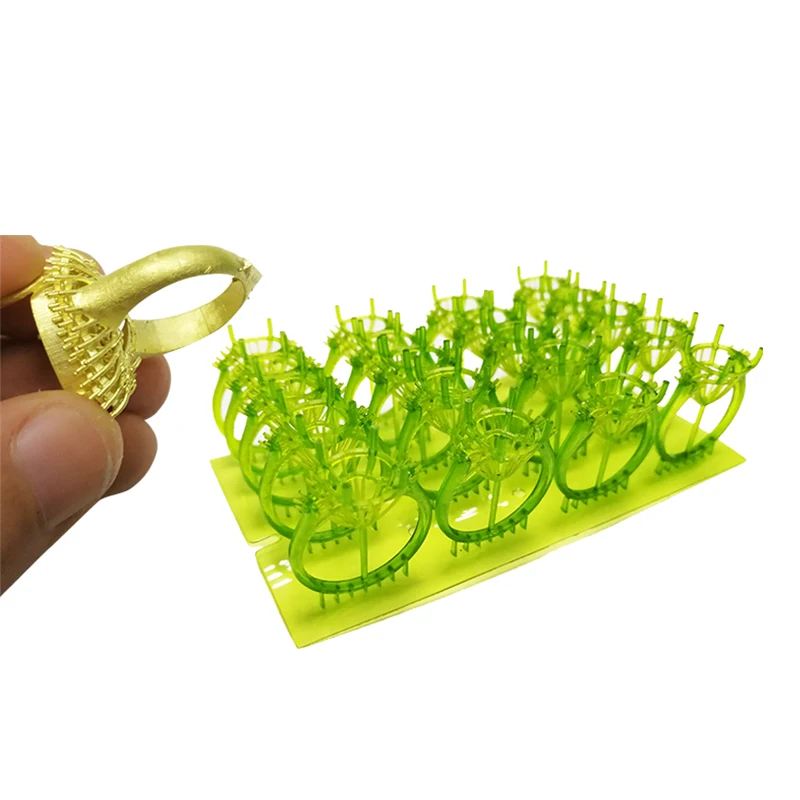 Instead, you’re going to be printing a high-detail mold that you can use to make your custom jewelry. Or, if you’re fine with a plastic piece, you’ll be printing high-detail resin jewelry.
Instead, you’re going to be printing a high-detail mold that you can use to make your custom jewelry. Or, if you’re fine with a plastic piece, you’ll be printing high-detail resin jewelry.
If you’ve made jewelry the traditional way before, you know the low-tech method of making these molds. You start by hand-crafting or CNC machining a version of the ring or jewelry piece, and then you create a mold around the part. After that, you solidify the mold and pour in your molten silver or gold to make the final ring!
3D printing a ring or other jewelry piece relies on the same processes, but it utilizes the technology of the 21st century. Moreover, instead of milling or hand-carving, you’re using a 3D printer to make a more detailed and precise jewelry piece, so you can make a more detailed mold.
Basically, any 3D printer, including hobbyist options like the Ender 3, can work for making jewelry molds. However, for a more detailed mold and, thus, a more intricate final jewelry piece, you’ll want to use a higher-end resin 3D printer.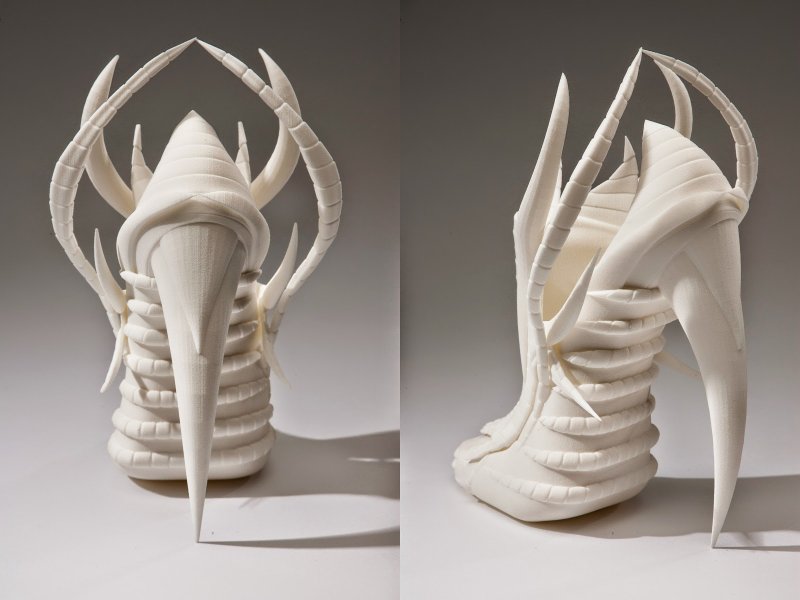
Process of 3D Printing Jewelry
In case you don’t know the process for 3D printing jewelry, let’s take a quick look at it.
First, you have to find a design for a jewelry piece or make a 3D model yourself. The latter method is better if you want a custom jewelry item and you can design your model in a CAD software, like Onshape or Blender.
Once you’ve got your ring 3D model, you’ll need to 3D print the part. No, we’re not making it out of gold, so you’ll need to print it in a plastic filament, resin, or special wax. Try to use a material that’s meant for high-detail printing, like Phrozen Aqua Grey 8K resin.
After you have the 3D printed version of your jewelry price, you’ll need to get it ready for casting in a more durable material like gold or silver. You can make a mold of your 3D printed model using wax!
Finally, pour your molten precious metal into that mold. After some time, the magic is done! You have a shiny ring!
But that whole process is really the easy part. The more challenging part is figuring out what 3D printer is right for you. Like a “choose your own adventure” book, you have some options to start you down your path.
The more challenging part is figuring out what 3D printer is right for you. Like a “choose your own adventure” book, you have some options to start you down your path.
Available 3D Printing Processes
When it comes to 3D printing a jewelry piece, there are a few different types of 3D printers you can use.
Most consumer-grade 3D printers are Fused Deposition Modeling (FDM) machines. FDM 3D printers use a heating element known as the hot end to melt stringed plastic material and lay it out, layer-by-layer, into your 3D model.
However, the more popular type of 3D printer for making jewelry is Stereolithography, or SLA for short. Instead of a heating element and stringed plastic, SLA 3D printers use a special laser with liquid resin. The liquid plastic resin is poured into a tub called the VAT, and the laser is placed beneath a screen, which solidifies the resin, layer by layer, to form your desired 3D model.
SLA is a more favorable tech for jewelry because of its high-detail printing abilities, but FDM is the more universal printing technology.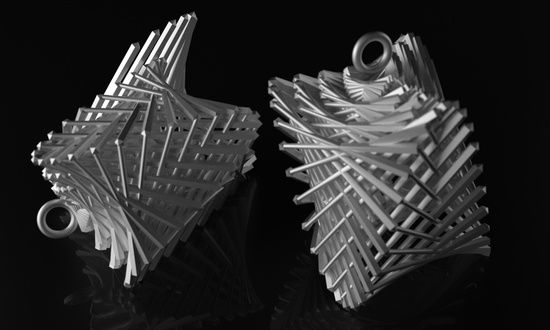
Should I Use FDM or SLA for Jewelry?
Okay, now that the nerdy science talk is over, let’s take a look at the two main methods of 3D printing used to make jewelry. Below, I’ve discussed how both FDM and SLA 3D printers work as well as each of their benefits.
FDM
The big benefit of using an FDM printer for making jewelry is that the cost is really low. The upfront cost of the printer is lower, and the operating cost is much lower. Of course, there’s a downside to this.
The quality you get with an FDM printer isn’t close to the quality you get with an SLA printer – it’s a lot worse. Moreover, you can’t capture as much detail or small features in prints on an FDM 3D printer as you can with an SLA machine.
As such, if your jewelry doesn’t require a lot of fine detail or you want to save money, then an FDM printer will be perfect for you. Additionally, an FDM printer is the better option if you plan on printing a ton of non-jewelry projects because FDM parts are stronger than those made on an SLA printer.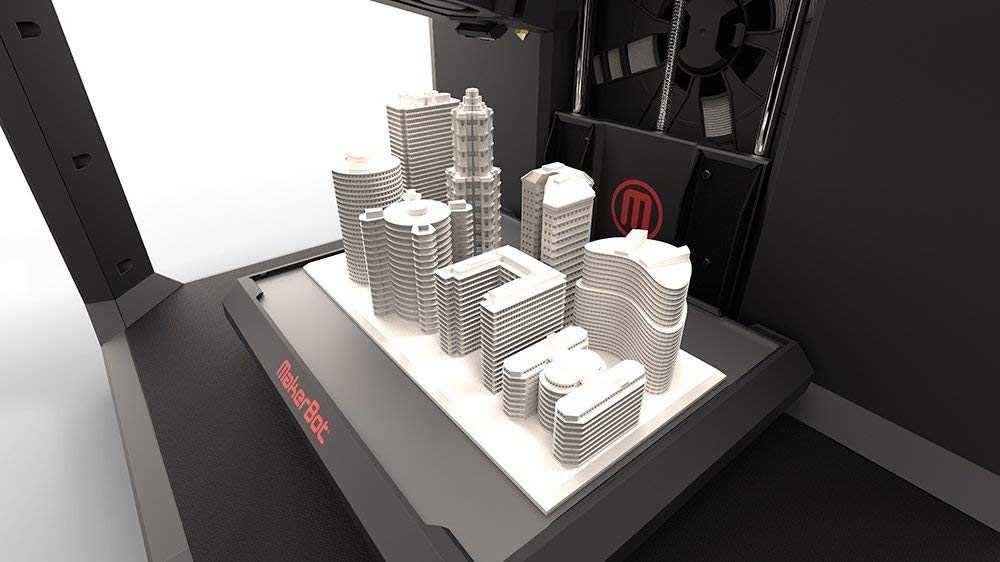
SLA
On the other hand, SLA 3D printers are typically more expensive than FDM printers. While the cost of an SLA printer has dropped dramatically over the past few years, you also need other hardware, like a washing station and a UV curing light, to use an SLA machine. And these costs should be considered when looking at the price of an SLA machine.
But the extra money for an SLA 3D printer is definitely worth it if you’re looking to print high-detail models. For example, if you wanted to 3D print a jewelry piece that had a very intricate design, an SLA 3D printer would be best.
It’s actually insane how much detail SLA 3D printers yield in models. Most SLA 3D printers today use a 4K pixel resolution LCD screen, but some printers, like the Phrozen Sonic Mini 8K, can print with 8K pixel resolution quality!
Sadly, there are some other problems with SLA 3D printers. For example, the resin is toxic and smells bad, making the printing process more dangerous. And, after a print is finished, you have to wash the part and cure it with a UV light.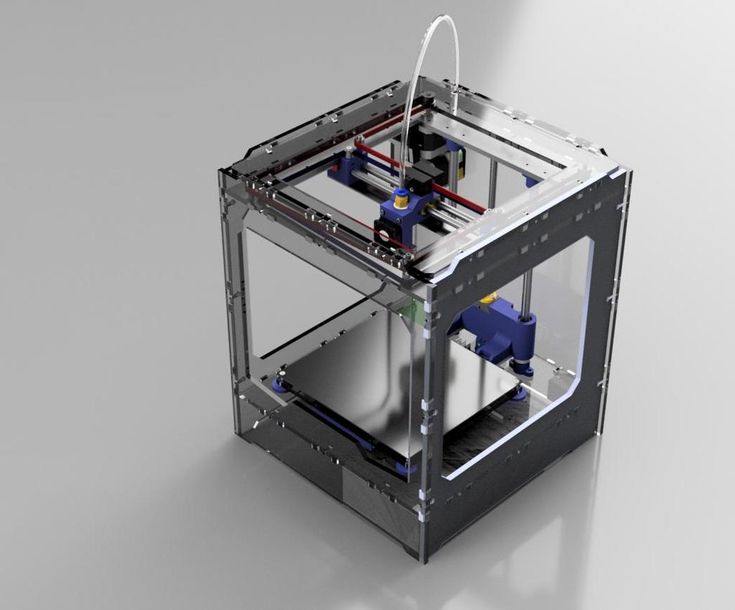
But if you want to print high-detail models and are okay with spending a lil’ extra, then an SLA 3D printer is definitely for you!
Why 3D Print Jewelry?
Source: Youtube Slava TVSo we highlighted how to 3D print jewelry, and what goes into it. But are you totally convinced that you should even try it? Why 3D print jewelry?
Why 3D print anything? The answer is exactly the same.
You have complete freedom over the design. You can make highly customized pieces and serve a niche market. If you can operate 3D CAD, you can completely design your own pieces to print.
Pieces can be made that seem to defy physics. You can 3D print such intricate pieces with odd geometries. This is great for modern pieces of jewelry.
For some pieces, there is no alternative. Traditional methods cannot scratch the surface of what you can make with a 3D printer. Some of your physics-defying pieces simply cannot be made on a CNC mill, so there’s no other option.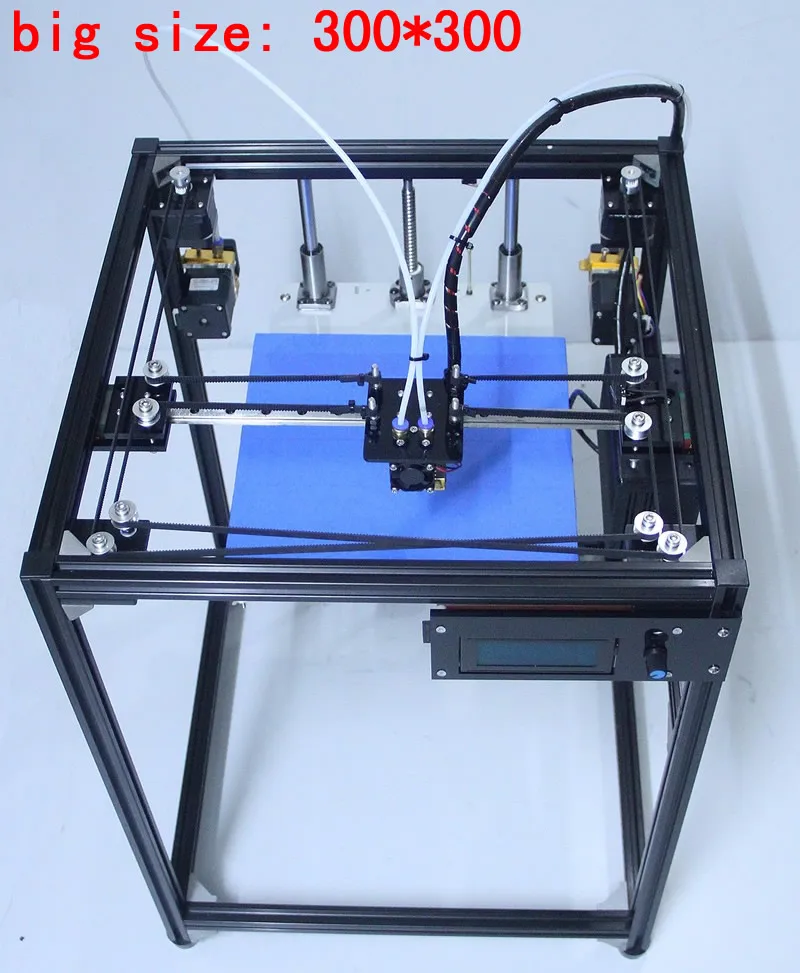
Prototyping is so much faster. I’m from a manufacturing background so trust me when I say that nothing compares to the lifecycle speed of a project when you’re using a 3D printer.
The time between the initial concept, designing, and getting your first working prototype could be 8 hours with a 3D printer. Traditional manufacturing methods might take a week for the same amount of progress.
The cost is so low. Crazy low. You don’t need a staff of trained machinists, design engineers, and project managers. You are the entire team. You don’t need a $250,000 CNC milling machine; a printer that costs a couple of hundred dollars will suffice. You don’t need a $100 piece of raw material to prototype with, $5 is plenty. Finally, you don’t need to pay someone hourly to make it, you hit “go” and leave the room.
So why 3D print jewelry? It’s faster, cheaper, more customizable, and you can make any shape you want.
Conclusion
I hope you get as excited as I do when I hear about all the different ways to 3D print jewelry and start growing your business or just making fun pieces as gifts to family and friends.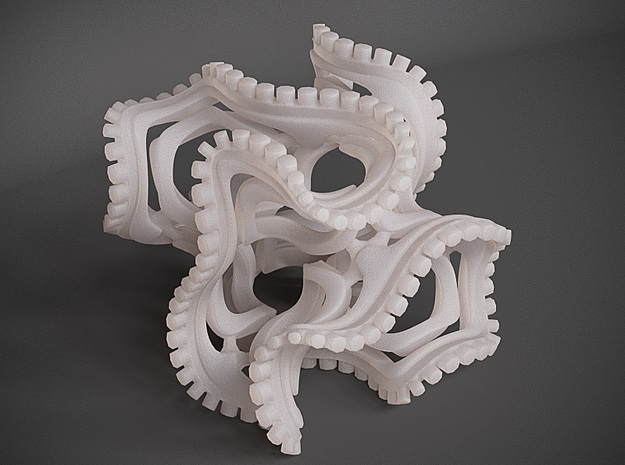
The process isn’t so hard to learn when you get your hands on a printer.
Whether you go with an FDM printer, an SLA printer, a budget option, or a professional high-quality printer, you’re going to love the new world you unlock with your 3D printer.
As for what printer to use, if you want to make high-detail jewelry pieces, I strongly suggest the Phrozen Sonic Mini 8K or Formlabs Form 3+. Both printers offer exceptional print quality, but the Sonic Mini 8K is probably better for those who don’t need as much print space.
And, if you’re on a budget, but still want to print high-detail models, then the Elegoo Saturn 2 8K should be your speed. It’s very budget-friendly, and has an 8K LCD screen for yielding high-quality prints.
On the FDM side, you have the Creality Ender 3 Pro which is perhaps the best option in this space. It’s budget-friendly and, as it’s an FDM 3D printer, the Ender 3 Pro is also a great machine for non-jewelry prints, so there’s a lot of opportunity for you!
Finally, if you’re ready to invest in your business and grow it, consider the top-of-the-line Solidscape S325 printer.
Enjoy your time with your new 3D printer! There’s a lot of learning and growing to be had!
Pat Nathaniel
Pat is the editor-in-chief at Printing Atoms. He has a BS in Mechanical Engineering from the University of Florida and wants to spread the word on 3D printing. When he's not writing, he likes to tinker with his Ender 3 Pro, test filament brands, and scuba dive.
Printing with Metals, Plastics, and Castable Resins
Rapid development of additive manufacturing leads to considerable changes in a lot of industries. Some of them use 3D technologies at all the stages of production, starting with 3D scanning and then employing 3D printing for prototyping or end-use parts production. Jewelry is one of the fields where digital technologies have only started their expansion, often being a bridge to traditional methods.
Credit: n-e-r-v-o-u-s.com
Digital revolution in jewelry
The craft of jewelry is as old as time, and it has always involved a lot of skill and time spent on every single item creation.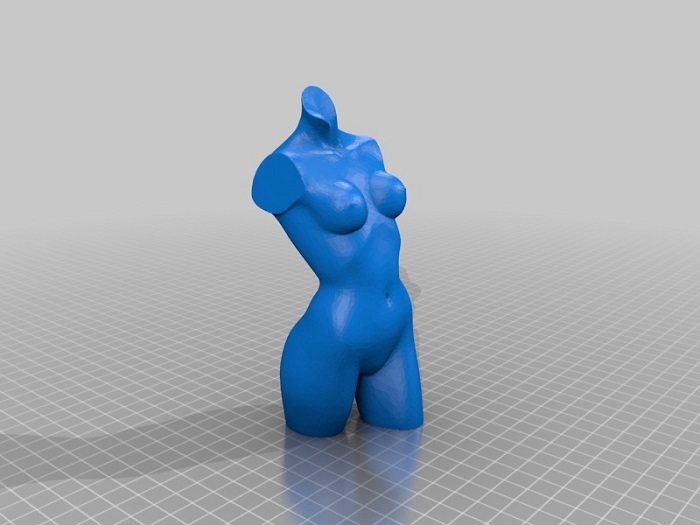 Besides, there are always limitations to human possibilities — however skillful a craftsman was, some most intricate design concepts could only exist in their imagination.
Besides, there are always limitations to human possibilities — however skillful a craftsman was, some most intricate design concepts could only exist in their imagination.
Credit: Pinterest
With 3D printing development, more and more people in the jewelry industry are discovering the opportunities it provides both from the artistic and business perspective.
The traditional method of jewelry manufacturing implies lost-wax casting. Casting patterns creation is an expensive and time-consuming part of the process, and this is where 3D printing can be of great help, becoming a bridge to conventional manufacturing. What’s so good about using digital technologies in such a traditional field? Let’s see.
Credit: fastcastings.com
Why 3D print jewelry
Complete design freedom
As mentioned, there are certain design limitations in traditional production of casting patterns that are made either by hand or using CNC machines.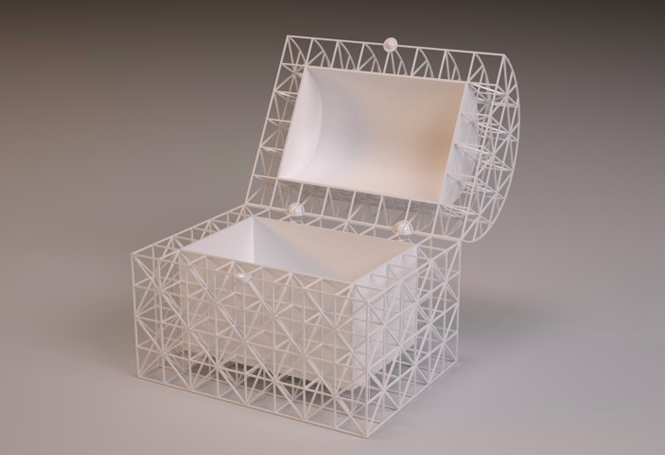 With digital design opportunities and 3D printers capable of reproducing the digital models with extreme precision and accuracy, it’s now possible to create wax casting patterns of any complexity. The use of 3D printing has brought up new standards in the art of jewelry, allowing for the designs that could have never been realized before.
With digital design opportunities and 3D printers capable of reproducing the digital models with extreme precision and accuracy, it’s now possible to create wax casting patterns of any complexity. The use of 3D printing has brought up new standards in the art of jewelry, allowing for the designs that could have never been realized before.
Credit: indiamart.com
Unlimited customization opportunities
Customization is of considerable importance in jewelry as customers often want to get one of a kind adornment. 3D printing provides vast opportunities for custom products, either created from scratch, or by adjusting the already existing design according to the customer’s wish. The customization process doesn’t require additional costs and takes considerably less time and effort than in traditional production, where any changes made upon the product jacked up the price.
Credit: sculpteo.com
Faster prototyping
With 3D printing, customers have a try-on option to make sure the model fits perfectly and completely meets all their needs, before the final part is made.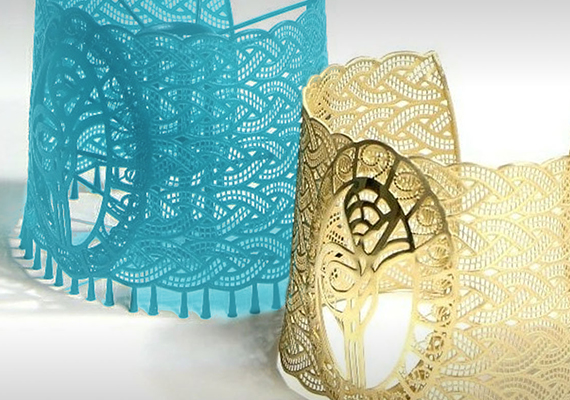 Printed resin prototypes are affordable and quick to make, they feature high quality and precision and can give the true-to-life impression of the future model.
Printed resin prototypes are affordable and quick to make, they feature high quality and precision and can give the true-to-life impression of the future model.
Credit: additive-plus.com
Lower cost
Batch-manufacturing in jewelry 3D printing allows reducing the production costs, as a whole run of wax patterns can be printed in one go, thus saving material and shortening the production time; you can also print different designs at a time. All this makes jewelry manufacturing more cost-effective than ever before.
Credit: hubs.com
3D Printing technologies in jewelry production
Basically, there are two ways of implementing additive manufacture into the jewelry business, namely direct and indirect 3D printing, the former being less common, at least for now.
Direct 3D printing
Direct 3D printing of jewelry implies using metal (SLM or DMLS-based) printers to build the final parts right from the digital models, created in CAD software.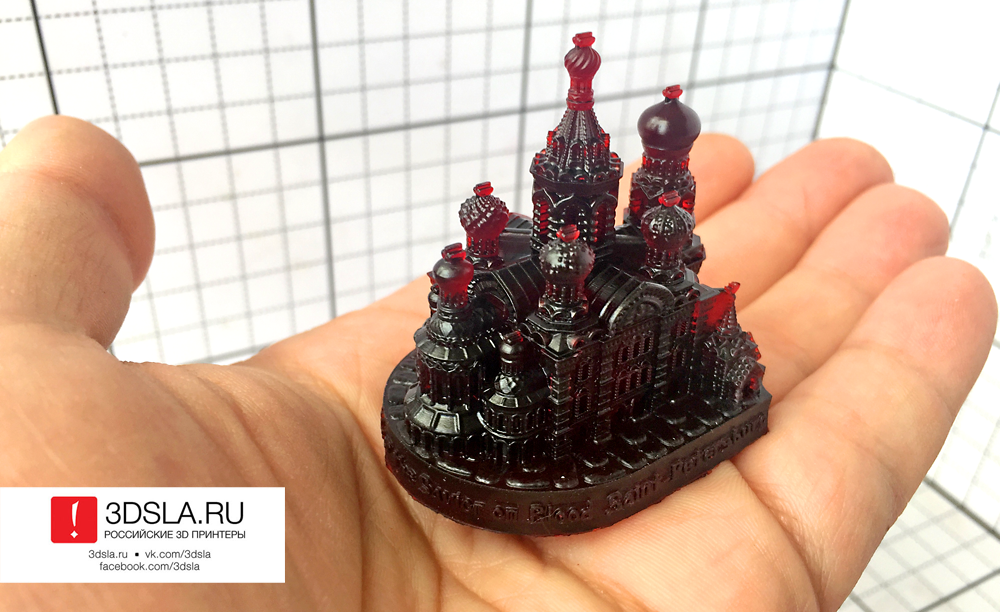 The parts can be printed with gold, silver, or platinum alloys or other metal powders. Such an approach completely excludes traditional techniques from the production cycle and turns it entirely digital.
The parts can be printed with gold, silver, or platinum alloys or other metal powders. Such an approach completely excludes traditional techniques from the production cycle and turns it entirely digital.
Credit: Pinterest
Despite all the general advantages of 3D printing, discussed above, this particular method is not very popular as it is more expensive than investment casting, and the printed parts require significant post-processing. Besides, precious metals are very difficult to print as they are highly reflective and thermally conductive. So, there are few printers in the market that can work with them. Still, rapid progress in digital technologies can change the situation for the better.
Indirect 3D printing
In this method, 3D printing is used to optimize the traditional lost-wax casting process to speed up the production and make it more flexible and cost-effective.
Credit: reddit.com
The jewelry 3D printing process
- First the design of the future piece is created using CAD software.
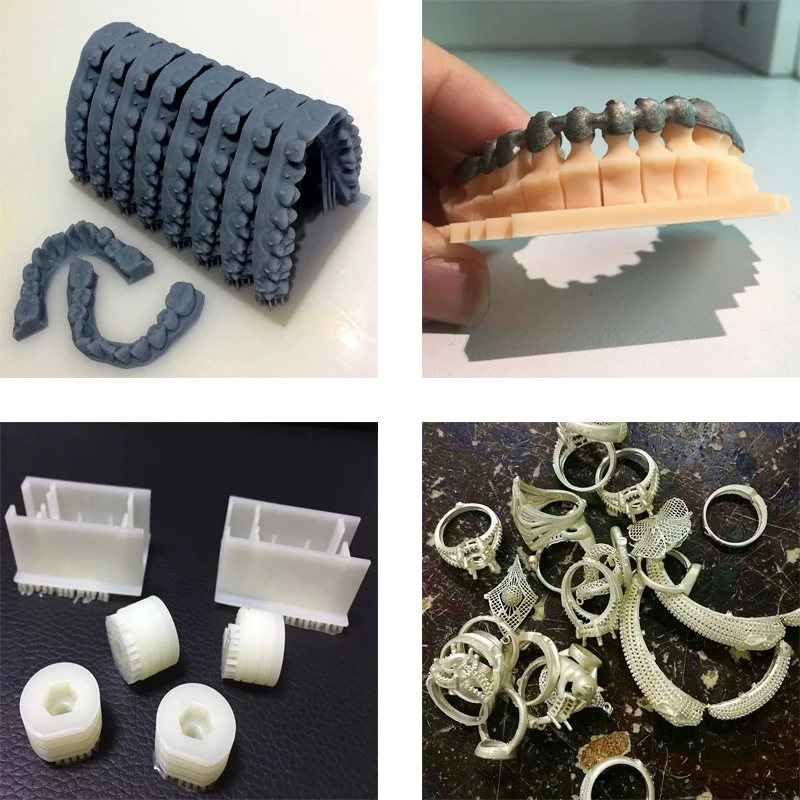 The STL (or other compatible) file is imported to a 3D slicer and prepared for printing.
The STL (or other compatible) file is imported to a 3D slicer and prepared for printing. - The model is printed using castable wax materials to make a wax casting pattern. At this stage you may want to print a try-on part first to ensure the fit and design are just right.
- The liquid molding material is poured over the wax pattern and left to solidify. Thus a mold for the future part is created.
- When the mold is hard, it is placed into a furnace to melt or burn out the wax pattern, forming a so-called negative mold.
- The final casting material, which is usually melted gold, silver, brass, or other metal, is poured into the mold and left to cool and solidify.
- The mold is removed and the final part is ready for post-processing.
What are 3D printers for jewelry?
For direct metal printing, SLM or DMLS printers are used. However, very few of them can work with precious metals alloys, so other metals, like steel or bronze, can also be used.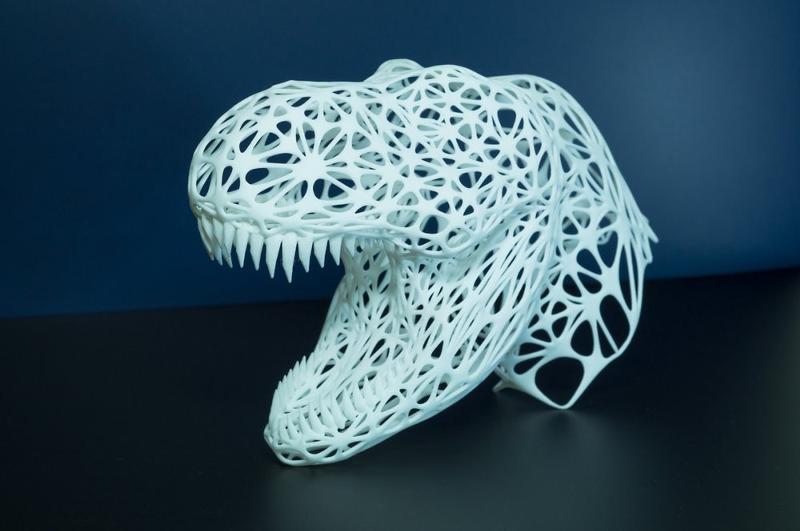
Some jewelers create their collections using SLS technology, printing unique modern jewelry pieces with nylon or polyamide.
Credit: dianalaw.com
3D printing of wax casting patterns requires exceptional precision and accuracy, as well as the use of appropriate wax-like materials that can be completely melted or burnt out afterwards. So, the best options possible here are resin or material jetting technologies.
Now let’s see which printer models are the most suitable for jewelry manufacturing.
The best 3D printers for jewelry 2022
Flashforge WaxJet 400
The Flashforge WaxJet 400 is a professional 3D printer based on MJP (MultiJet Printing) technology. It prints wax casting patterns for investment casting and works with proprietary materials for parts and support structures printing. The device can print layers at the height of 16 microns with the printing resolution of 1200 x 1200 x 1600 dpi and the accuracy of ±0.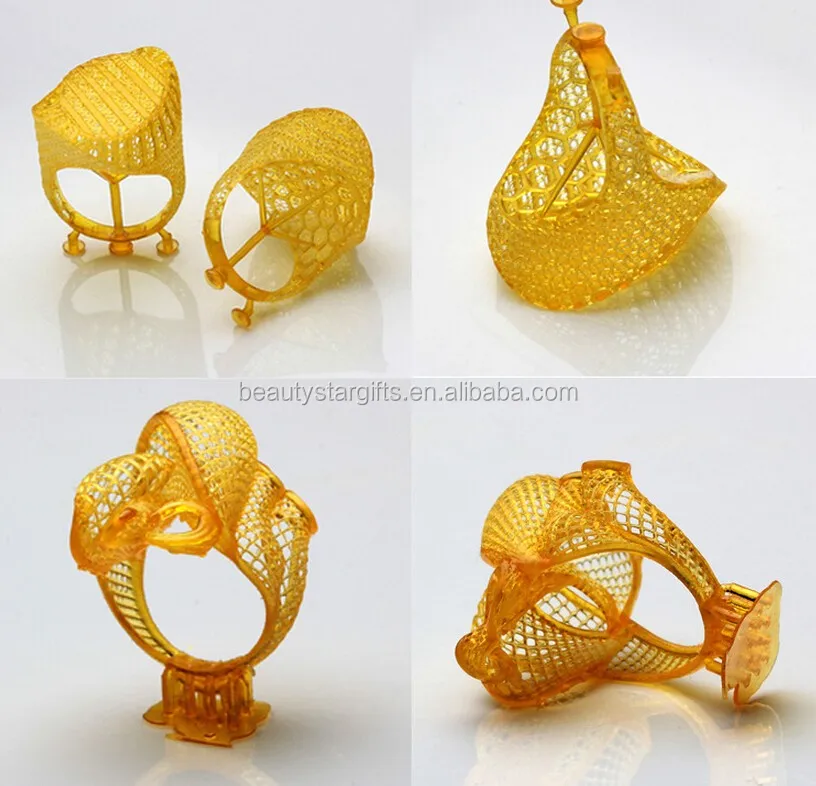 04 mm / 20 mm, which provides accurate highly detailed models with smooth surface finish. The large build volume of 289 x 218 x 150 mm allows printing multiple models in one go and together with fast print speed makes for high productivity of the WaxJet 400.
04 mm / 20 mm, which provides accurate highly detailed models with smooth surface finish. The large build volume of 289 x 218 x 150 mm allows printing multiple models in one go and together with fast print speed makes for high productivity of the WaxJet 400.
Pros
- High print quality
- Extreme productivity
- Highly automated printing process
- Large build volume
Cons
- Can print with only proprietary materials
Phrozen Sonic 4K 2022
The Phrozen Sonic 4K 2022 is a large resin 3D printer designed for the dental industry, and it absolutely meets the requirements of jewelry production. It sports a monochrome LCD matrix with a resolution of 3840 x 2160 and a build volume of 135 x 75 x 200 mm. The optical system of the device has been improved compared to the previous models. The Phrozen Sonic 4K is equipped with a powerful ParaLED® 3.0 module which provides uniform light exposure and, consequently, uniform layer thickness over the entire area of the print.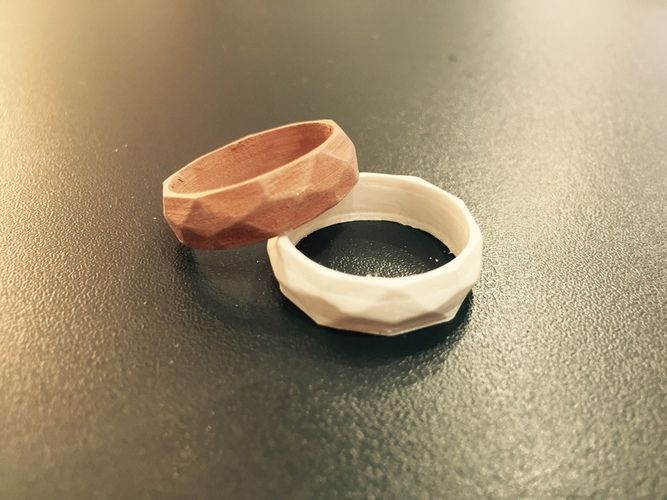 The minimum layer height of 10 microns ensures exceptional print quality. Phrozen offers a choice of castable resins that can be used with the Sonic 4K 2022 to print mold patterns for investment casting.
The minimum layer height of 10 microns ensures exceptional print quality. Phrozen offers a choice of castable resins that can be used with the Sonic 4K 2022 to print mold patterns for investment casting.
Credit: @georgebulte / Instagram
Pros
- Fine precision and uniformity of the prints
- Fast print speed
- Wide choice of materials, including castable resins
- Wide connectivity options
Cons
- Rather small build volume
Anycubic Photon Mono X
The Anycubic Photon MonoX is a large-format resin 3D printer based on LCD technology. Uniform light exposure over the entire print area is provided by the 8.9" 4K LCD screen and a new parallel light source. The build volume of 192 x 120 x 245 mm and fast print speed stand for high productivity, while the 10-micron minimum layer height allows printing high quality casting patterns for jewelry manufacturing.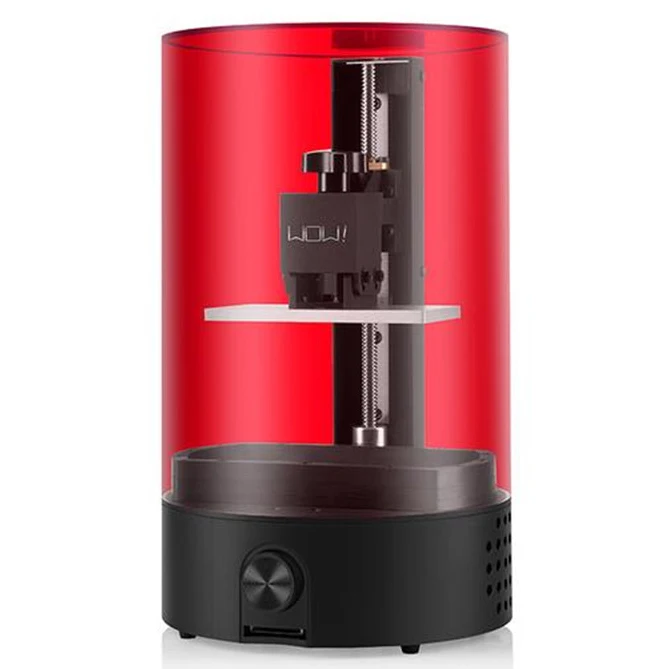 For better performance and more convenient post-processing the Photon Mono X can be supplemented with the Anycubic Wash and Cure Machine 2.0.
For better performance and more convenient post-processing the Photon Mono X can be supplemented with the Anycubic Wash and Cure Machine 2.0.
Pros
- Fast print speed
- Great print quality
- Large build volume
- Built-in safety functions
- Fast and easy set-up
Cons
- Print bed is difficult to clean
Original Prusa SL1S Speed
The Original Prusa SL1S Speed is an LCD-based resin 3D printer featuring a 5.96'' monochrome LCD screen with 2560 x 1620 resolution and a new optical system with a four times more powerful UV LED panel than the previous SL1 model. The print speed of the SL1S Speed is remarkably fast — the curing time for a single layer is just 1.4 seconds. Fast accurate printing and compatibility with different types of 405 nm UV resin make the Prusa SL1S a great option to use in jewelry for casting patterns production. The printer can be bought stand-alone or as part of a special bundle of the Original Prusa SL1S 3D printer and the Curing and Washing Machine.
Pros
- Fast speed
- Excellent print quality
- Easy operation
- Compatible with third-party materials
Cons
- Rather small build volume
Farsoon FS273M
The Farsoon FS273M is an MLS (metal laser sintering) industrial 3D printer featuring rather compact size for a professional machine, still high throughput and impressive build volume which is a cylinder of 275 x 275 x 355 mm. The FS273M can be equipped with a single or dual 500W fiber laser and a high-precision digital galvo system, and can print layers at the height of 20 microns providing detailed precise models that are a must while printing jewelry. The printer is an open material system and is compatible with a great variety of proprietary and third-party metal powders, some of them being suitable for printing end-use jewelry pieces.
Pros
- Industrial-grade print quality
- High print speed
- Sizable build volume
- Open material system
- User-friendly operation
BLT-S210
The BLT-S210 is an SLM 3D printer capable of printing with a large number of metal alloys, including Titanium, Aluminum, Cobalt Chromium, Stainless Steel, Copper, and a lot more.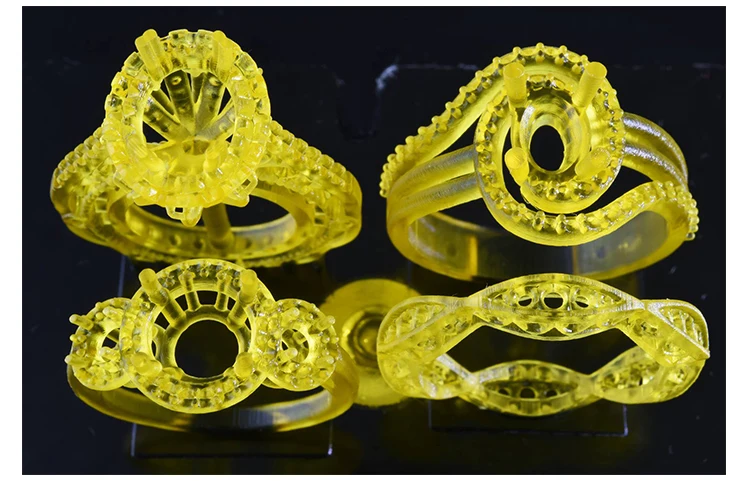 The 500W laser and F-Theta optical system ensure high-quality metal parts with excellent mechanical properties and repeatability. The compact build area of 105 x 105 x 200 mm is perfect for batch-manufacturing of small jewelry items or for printing larger parts. Operation and maintenance of the device are easy and convenient due to the modular design of the S210. The printer is an open-parameter system, so the user is able to edit 294 parameters to precisely adjust the printing process and get the best result possible.
The 500W laser and F-Theta optical system ensure high-quality metal parts with excellent mechanical properties and repeatability. The compact build area of 105 x 105 x 200 mm is perfect for batch-manufacturing of small jewelry items or for printing larger parts. Operation and maintenance of the device are easy and convenient due to the modular design of the S210. The printer is an open-parameter system, so the user is able to edit 294 parameters to precisely adjust the printing process and get the best result possible.
Pros
- 15 microns minimum layer height
- High-quality prints with great repeatability
- Wide material compatibility
- Intelligent software
Cons
- Needs a lot of installation space
Bottom line
The use of additive manufacture technologies in jewelry has given a boost to the industry development and set up new standards in jewelry design. The possibility to print objects of extremely complex geometries and ultimate customization options open unlimited opportunities for the designers and provide the customers with absolutely new fascinating jewelry pieces.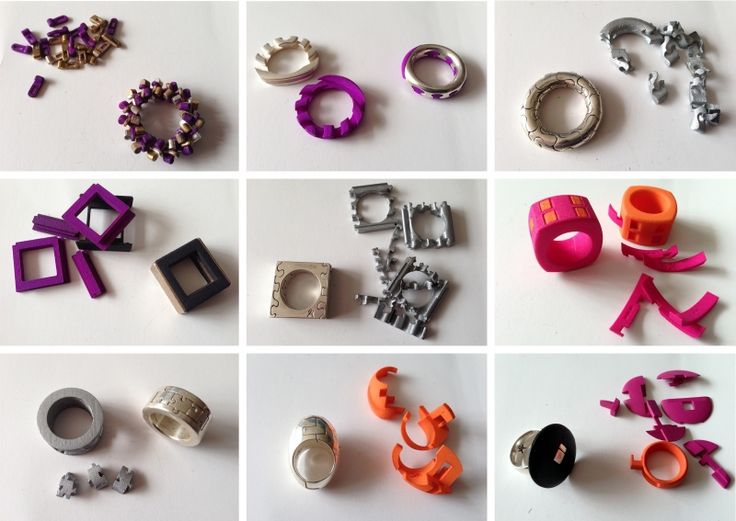
Choice of technology and 3D printer for jewelry making, pros and cons
Currently, there are many new technologies that are designed to simplify production in various industries. Progress does not stand still and, despite some opponents, 3D printing has its own niche in the production of jewelry.
3D printing can speed up and reduce the cost of jewelry production due to the low cost of consumables. With 3D printers, jewelers have the ability to quickly change the design of a product and make prototypes at least several times a day. For many jewelry industries, 3D printing is becoming a good alternative or addition to milling machines and other equipment. nine0003
Until now, some believe that handmade is a sign of craftsmanship, especially when it comes to creative work, and models made using 3D modeling and printing are amateurish. But many people forget that behind the computer is the same person who not only mechanically presses the buttons, but also puts his soul into his creation.
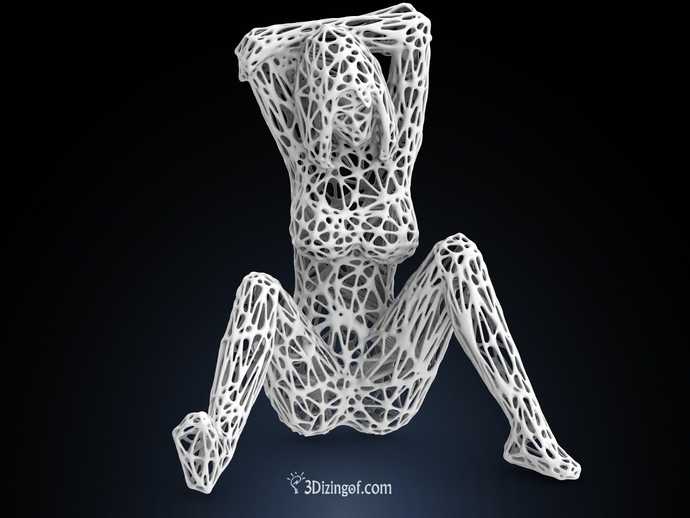
Benefits of 3D printing
In order to understand how justified the use of a 3D printer is, you need to know how jewelry is made. This is very painstaking work. No wonder the expression "jewelry work" appeared, denoting a very delicate and complex work. nine0003
Any decoration begins with a sketch. Usually several sketches are made in order to accurately determine the design and location of the inserts. Not only stones are used as decor, it can be elements made of wood, bone, precious metals, it all depends on the designer's imagination.
At the next stage, the product is drawn in a 3D editor. This allows not only to visualize the future product, but also to correct some errors and inaccuracies made at the design stage. nine0003
Ring model
Some craftsmen still carve "stencils" by hand. Such work requires certain skills and perseverance. Usually this is how products are made that will be cast in a single copy.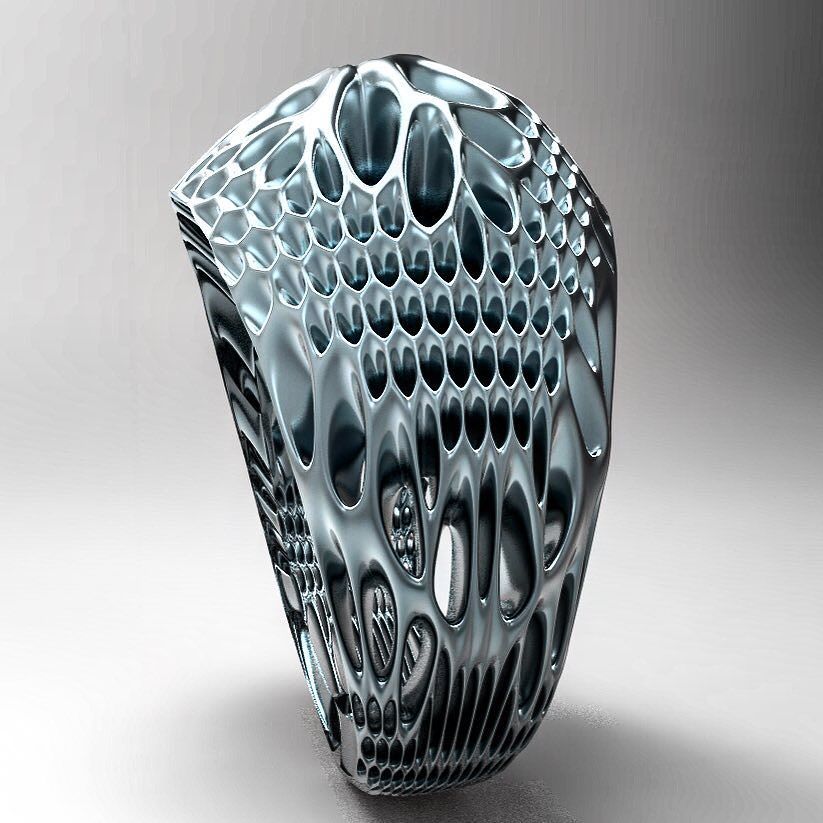
A finished 3D model can have several ways to be implemented in a physical version - this is milling or 3D printing.
Stencil milling
Currently, 3D printing is not much inferior in accuracy to a milling machine and often has a significant advantage in speed, despite the fact that after printing it is still necessary to separate the supports and clean up the points of contact with the model. Once a physical model has been obtained, it can be cast immediately if the material used is wax or a burnable polymer.
If it is necessary to cast a large batch of products, then a mold is made from the master model made with the help of special rubber for subsequent wax casting. There are many types of rubber that vary in hardness and curing temperature. Rubber is selected depending on the material from which the master model is made. nine0003
For pouring molds, a special machine is usually used - an injector.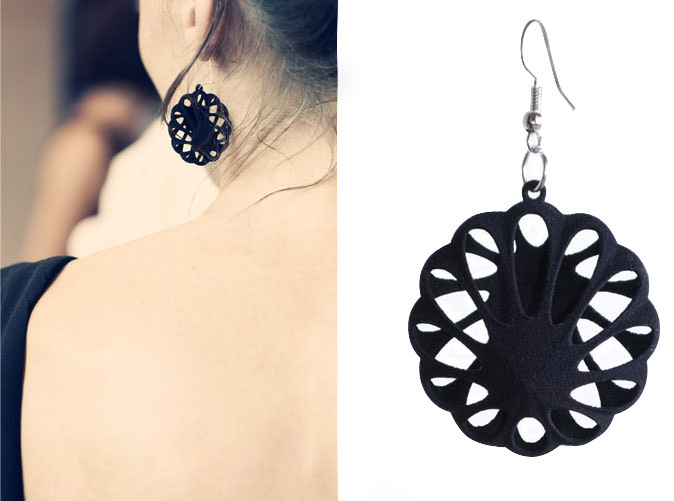 In some models, you can not only heat the wax, but also vacuum it or leave it under pressure. This helps to reduce the number and size of air bubbles for better pouring of the rubber mold.
In some models, you can not only heat the wax, but also vacuum it or leave it under pressure. This helps to reduce the number and size of air bubbles for better pouring of the rubber mold.
In home workshops, silicone is used instead of special rubber. After all, a special machine is needed to vulcanize rubber. But rubber molds are too soft and short-lived for making a large batch of stencils. nine0003
After making the required number of stencils, they are collected in "Christmas trees". "Elks" are waxes soldered to a wax rod. To save space, the distance between them is very small and they resemble fluffy Christmas trees, hence the name. The finished Christmas tree is weighed to calculate the required amount of metal. In some places, stones are immediately inserted into the stencils, unless another mounting option is provided.
nine0003
Stencil Christmas trees
Ready "Christmas trees" are placed in a special cylindrical "cassette" without a bottom, which is called a flask, and filled with a gypsum-based molding mass. The flask with uncured gypsum must be evacuated to get rid of unnecessary air bubbles that can lead to defects on the surface of the finished casting.
The flask with uncured gypsum must be evacuated to get rid of unnecessary air bubbles that can lead to defects on the surface of the finished casting.
After hardening, the gypsum flask is sent to a muffle furnace to melt the wax. nine0003
The calcination mode is selected depending on the material of the wax. For wax or burnout polymer, different modes are needed in order for the material to be completely removed from the gypsum!!!!!!
When all the wax is melted, cavities are formed inside the gypsum, repeating the contours of the wax. Metal is poured into these voids. After casting, the flask is cooled and the gypsum mold mass is washed out under the pressure of water. The result is a metal Christmas tree. nine0003
Herringbone after casting
Finished castings are cut from the Christmas tree and washed, polished, if necessary, blackened by the master until the desired appearance is achieved.
3D printers for jewelers
There are several 3D printing technologies that may be suitable for the needs of jewelers. Each has its pros and cons. Some 3D printers are ideal for a large workshop, and some are ideal for a small workshop. nine0003
SLA
SLA or stereolithography is based on the principle of layer-by-layer solidification of a photopolymer resin under the action of a UV beam. The UV beam is focused by means of mirrors on the surface of the resin and illuminates the model in layers.
How the SLA Printer Works
SLA 3D printers were the first to be noticed by jewelers. SLA devices are compact, while they have high printing accuracy. nine0003
Pros and cons
pros
Minuses
Print examples
From prototype to finished product
Cast and printed ring
Rating of printers.
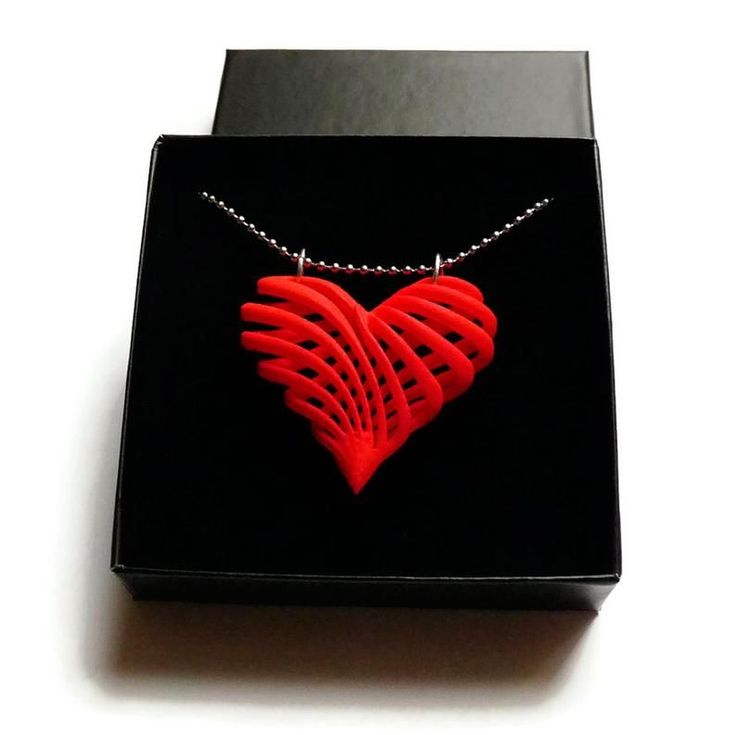
Leadership among the production of SLA 3D printers is held by Formlabs.
Formlabs Form 3
Formlabs Form 3
Specifications:
XY resolution: 25 µm
Laser spot size: 85 µm
Laser power: One 250mW laser
Working area size: 14.5×14.5×18.5cm
Layer thickness: 25 – 300 µm
A professional 3D printer that is popular with professional jewelers and dentists. nine0003
Formlabs Form 3L
Formlabs Form 3L
Specifications:
XY resolution: 25 µm
Laser spot size: 85 µm
Laser power: One 250mW laser
Working area size: 33.5×20×30cm
Layer thickness: 25 – 300 µm
Form 3L differs from younger models in its large print area, which allows you to produce truly large products without losing quality and accuracy. nine0003
DLP/LCD
DLP is very similar to SLA, only as a source of UV radiation, to illuminate the photopolymer resin, not a directed beam of light is used, but a DLP projector.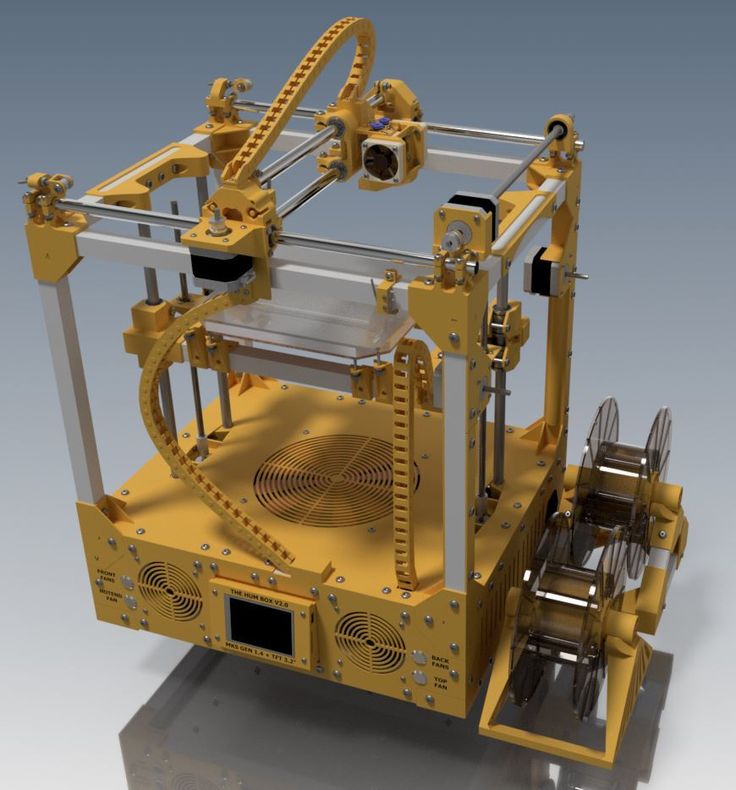 DLP printers illuminate the entire work area at once, so they greatly outperform SLA in print speed.
DLP printers illuminate the entire work area at once, so they greatly outperform SLA in print speed.
How a DLP Printer Works
Today it is one of the most affordable photopolymer 3D printing technologies. In terms of cost, LCD printers have caught up with the price level of amateur FDM. DLP printers are much more expensive due to the use of an expensive projector as a UV source. nine0003
The projector is of course more expensive, but more durable, on the other hand, the LCD display is not so expensive and can be easily seen, unlike the projector. What to choose each user decides for himself.
Pros and cons.
pros
Minuses
Print examples
Comparison between 3D printed master model and molded part
nine0021
Burnout resin model and finished product
Demonstration of products cast with burnout resin
Rating of printers.
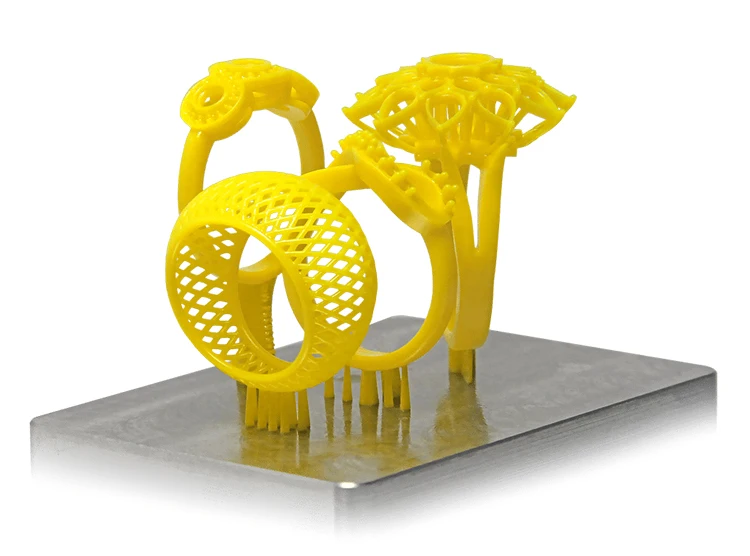
The print accuracy of LCD printers depends on the pixel size, so you should pay attention to this parameter when choosing a printer.
Anycubic Photon Mono
Anycubic Photon Mono
Specifications:
LCD display resolution: 2560x1620 (2K)
XY Positioning Accuracy: 0.051mm
UV wavelength: 405 nm
Working area size: 130x80x165 mm
Layer thickness: 0.01-0.15mm
The Anycubic Photon Mono is an inexpensive LCD machine ideal for hobby printing. The monochrome display allows you to reduce the exposure time and speed up printing. nine0003
Phrozen Sonic 4K
Phrozen Sonic 4K
Specifications:
LCD resolution: 6.1" 4K Mono LCD
XY positioning accuracy: 35 microns
UV wavelength: 405 nm
Working area size: 134x75x200 mm
Layer thickness: 0.01-0.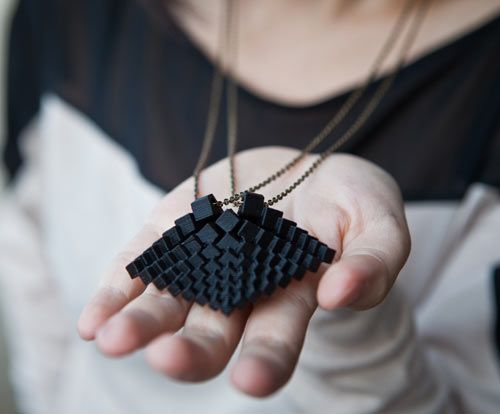 30mm
30mm
Phrozen Sonic 4K is specifically designed for use in the dental and jewelry industry. Despite its compact size, the printer is not inferior to professional machines in accuracy, and the exposure time of one layer is only a few seconds. nine0003
Phrozen Sonic Mighty 4K
Phrozen Sonic Mighty 4K
Specifications:
LCD resolution: 9.3" 4K Mono LCD
XY positioning accuracy: 52 microns
UV wavelength: 405 nm
Working area size: 200x125x220 mm
Layer thickness: 0.01-0.3mm nine0003
Phrozen Sonic Mighty 4K is a professional device with a large print area. This allows you to quickly produce small batches of models.
Phrozen Sonic XL 4K
Phrozen Sonic XL 4K
Specifications:
LCD resolution: 8.9" 4K Mono-LCD
XY positioning accuracy: 50 microns
UV wavelength: 405 nm
Working area size: 190x120x200 mm
Layer thickness: 0. 01-0.3mm
01-0.3mm
The Phrozen Sonic XL 4K is a professional machine with a large print area and a high resolution monochrome LCD display. This allows you to quickly produce batches of products with high accuracy.
Peopoly Phenom XXL
Peopoly Phenom XXL
Specifications:
LCD display resolution: 3840x2160 (23.8", 16:9, UHD 4K)
XY positioning accuracy: 137 µm
UV wavelength: 405 nm
Working area size: 527x296x550 mm
Layer thickness: 0.01-0.3mm
The Peopoly Phenom XXL is a device with a huge build area, which is ideal for serial production of not only jewelry. nine0003
Phrozen Sonic MEGA 8K
Phrozen Sonic MEGA 8K
Specifications:
LCD resolution: 15" 8K Mono LCD
XY Positioning Accuracy: 43 µm
UV wavelength: 405 nm
Working area size: 330 x 185 x 400 mm
Layer thickness: 0. 01-0.3mm
01-0.3mm
This is the first LCD printer with 8k monochrome matrix resolution, and a huge working area allows you to produce large batches of products in one print.
MJM/MJP
MJM (or similar PolyJet technology) is a technology for layering photopolymer or wax through many fine nozzles. Typically, the print head is located from 96 to 448, depending on the printer model.
If a photopolymer is used as a material, it is immediately cured by a UV lamp, which is located on the printer's head. nine0003
How the MJM printer works
In addition to photopolymer, MJM 3D printers can use wax as a material for printing.
MJM printers can print multiple materials at the same time. This allows you to print complex models with soluble or investment supports. This makes it possible to produce complex models with a smooth surface quickly and easily.
Pros and cons
pros
-
Ability to print multiple materials at the same time.
 This means that another, soluble material can be used as a support. This allows you to save a lot of time on removing the support from the finished model and cleaning up the places where the supports come into contact with the print.
This means that another, soluble material can be used as a support. This allows you to save a lot of time on removing the support from the finished model and cleaning up the places where the supports come into contact with the print.
Minuses
-
To install the printer, most likely, you will need a separate room. 3D printers based on MJM technology are quite bulky in their dimensions, this is not a device that can simply be placed on a desktop or nightstand. nine0003
Print examples
Seal of a lot of stencils
Ring printed with wax
Master models made on MJM printer
Lot of jewelry stencils for further casting nine0003
Printer rating
FlashForge WaxJet 410
FlashForge WaxJet 410
Specifications:
Materials: Wax, support material.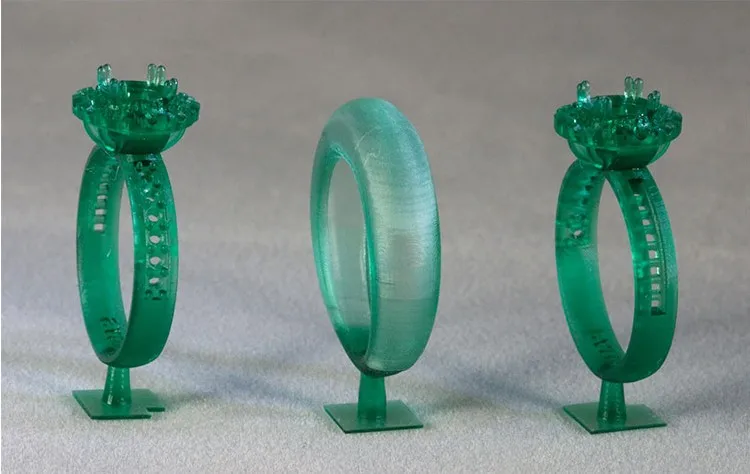
Resolution: 1200*1200*1600
Building area size: 289*218*150mm
Layer thickness: 16 microns nine0003
Accuracy: ±0.04mm / 20mm
The FlashForge WaxJet 410 is an industrial machine designed for serial printing of wax models, which will then be cast from metal. Machines of this class can be useful not only in jewelry production, but also in the dental industry, aerospace, mechanical engineering, prototyping, etc.
Totals
Photopolymer 3D printers are no longer inferior in detail to professional milling machines. The main advantage of a 3D printer is the ability to produce models of complex geometry with many internal cavities that are physically impossible to produce on a router. nine0003
Large firms will appreciate the flexibility that allows them to quickly adapt to customer requirements, as well as quickly produce large and small batches of products due to the shortening of the production chain.
And for a small workshop, a small photopolymer printer with a can of burn-out resin can be a good help, eliminating the need to purchase some expensive machines.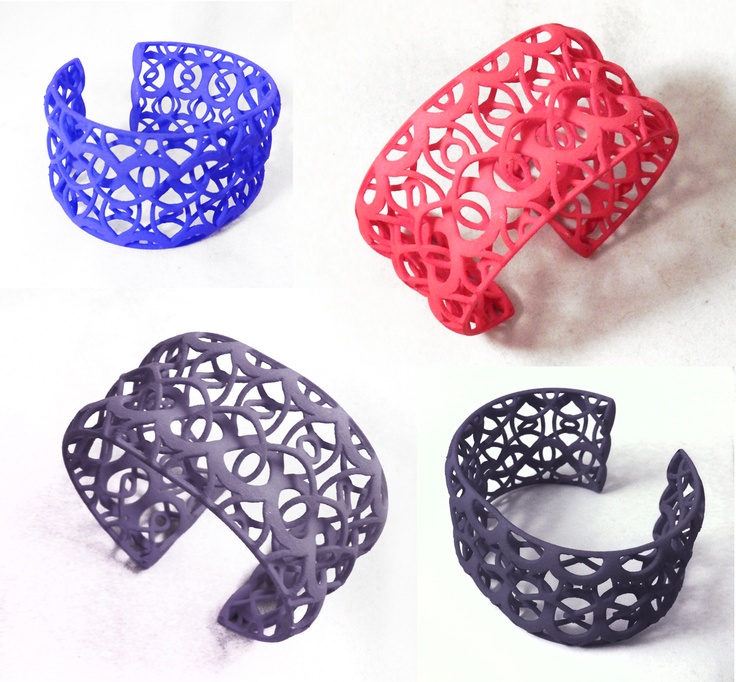
Top 5 Jewelry 3D Printers of 2022 (All Price Ranges!)
Jewelry 3D printing rarely means 3D printing actual wearable items in filament or resin, but instead a jewelry 3D printer is used to create high resolution wax models of the final design in gold or platinum, used to create a mold that is fired and cast by investment casting or lost wax casting.
In fact, many pieces of jewelry are now made in this way. There are entire factories of resin casting 3D printers that create models from wax resin, which are then cast and melted down to create high-end jewelry. nine0003
However, having your own jewelry 3D printer gives you more control over your production and saves you money compared to paying someone to print your own molds. Molds for rings and other jewelry can be made for as little as a dollar or two, while you can pay over $25 to have someone print them for you.
Contents
- Jewelry 3D Printing Process
- What are 3D Jewelry Printers? nine0396
- Cut and prepare: If it's not already an STL or compatible file, export it.
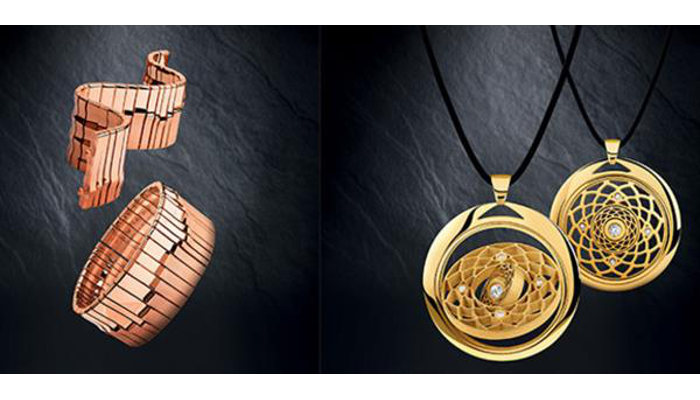 Then import it into a 3D slicer and slice it for printing.
Then import it into a 3D slicer and slice it for printing. - Print Model: Use castable wax resin designed for 3D printing jewelry models.
- Molding: Pour the molding material onto the wax model of the jewelry and let it set.
- Melt the wax: Heat the new mold so that the original wax model melts and evaporates, leaving an empty space inside with the exact dimensions of the planned piece of jewelry. nine0396
- Casting: Pour molten liquid metal such as gold, silver or platinum into a mold.
- Jewelery 3D Printer Price: $329
- Assembly volume: 129 x 80 x 160 mm
- Jewelry 3D printer price: $1,999
- Assembly volume: 276 x 155 x 400 mm
- 3D Jewelry Price: $3,499
- Assembly volume: 145 x 145 x 185 mm
- Price: Quote required
- Assembly volume: 6″ x 6″ x 4″
- Build Volume: 148 x 83 x 110mm
- Long term money savings: instead of paying a 3d printing service for you, you can 3d print for you $20+ molds print your own wax molds for jewelry for just a dollar each.
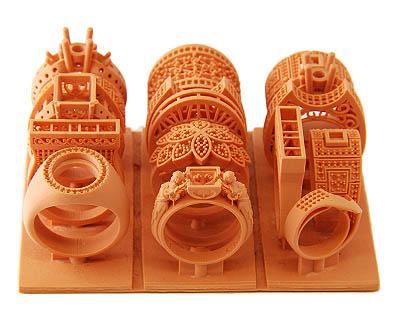
Learn more
What are the types of 3D jewelry printers?
Resin 3D printers are considered the best 3D printers for jewelry. They are used with specialized casting wax resins that do not change from a solid to a liquid when heated, but immediately turn into a gas from a solid state.
FDM 3D printers, although common, are very rarely used as jewelry 3D printers. They are not capable of providing the same resolution, sharp surface finish and precision required for complex and delicate jewelry.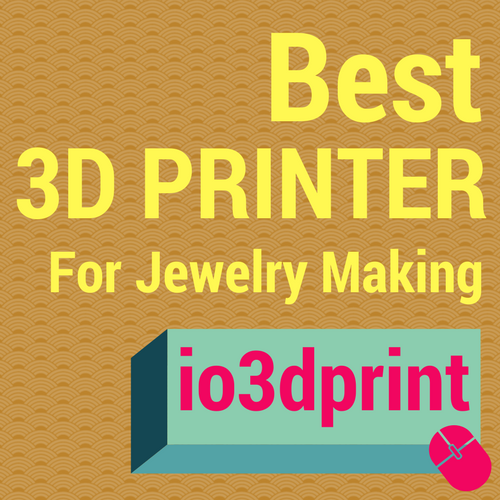 nine0003
nine0003
3D jewelry prints need to be incredibly detailed and precise - an inaccurate shape will create an inaccurate and featureless piece of jewelry.
In addition, the better the quality of the jewelry 3D printer, the less fine-tuning the jewelry needs to be.
What do jewelry 3D printers produce?
They usually print wax molds for jewelry, such as rings, before stones or individual chain links are set.
However, they can also be used to create similar "fitting pieces" to check that a ring that has not yet been made fits the customer's finger. Although it would be costly and time consuming to make the final ring, an exact copy can be made on a jewelry 3D printer in just a few minutes to check the size. nine0003
This eliminates the need to create a piece only to find it doesn't fit. While jewelry molds require special casting resins, standard resins can be used for these parts.
Best Jewelery 3D Printers
1 - Elegoo Mars 2 Pro
Featuring a 6-inch HD 2K monochrome LCD screen, the Elegoo Mars 2 Pro offers accurate jewelery printing for the price.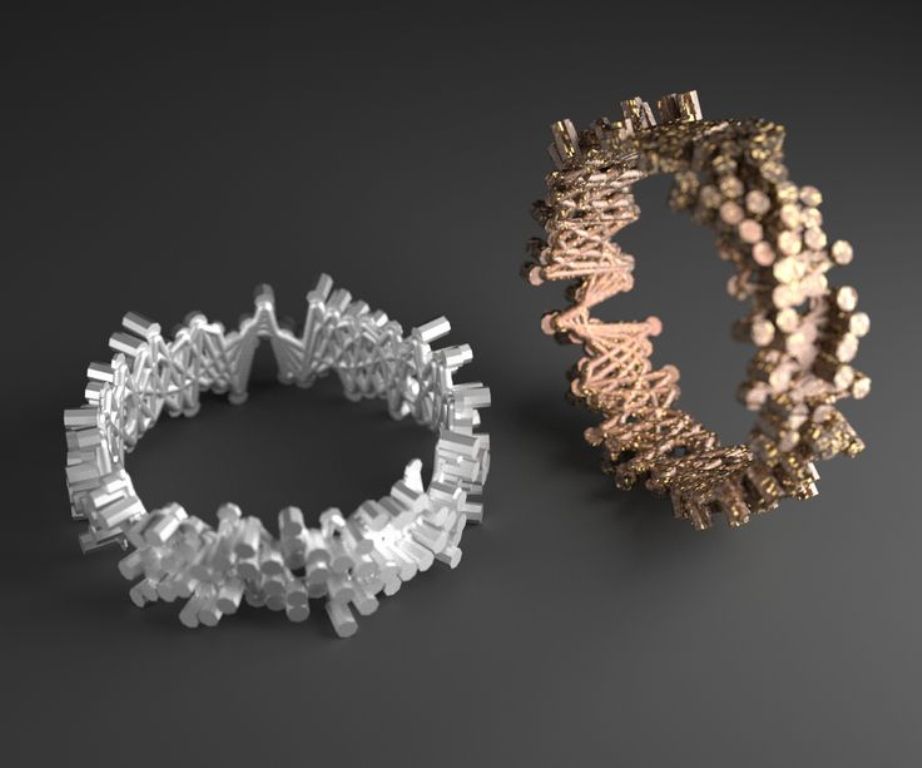 Instead of DLP or SLA, Mars 2 Pro uses LCD printing to cure all layers of resin at once, which speeds up printing speed and allows you to print at speeds of 30-50mm/h. nine0003
Instead of DLP or SLA, Mars 2 Pro uses LCD printing to cure all layers of resin at once, which speeds up printing speed and allows you to print at speeds of 30-50mm/h. nine0003
The other jewelry 3D printers on this list offer better quality, but for the price, the Mars 2 Pro is a great option. It is durable with CNC-machined aluminum construction for better stability, and the monochrome LCD has been upgraded for longer life to save you money in the long run. This is one of the best 3D printers for jewelry under $500.
The Elegoo Mars has a Z resolution of up to 0.00125 mm, an XY resolution of 0.05 mm and weighs 6.2 kg. It also supports 12 different languages, so if you're not a native English speaker, you can choose your own language. nine0003
The video below even shows from start to finish just how accurate wax models for gold jewelry can be made with a standard Elegoo Mars. Even this standard version produces good quality wax models, and the Elegoo Mars 2 Pro has several improvements over the original.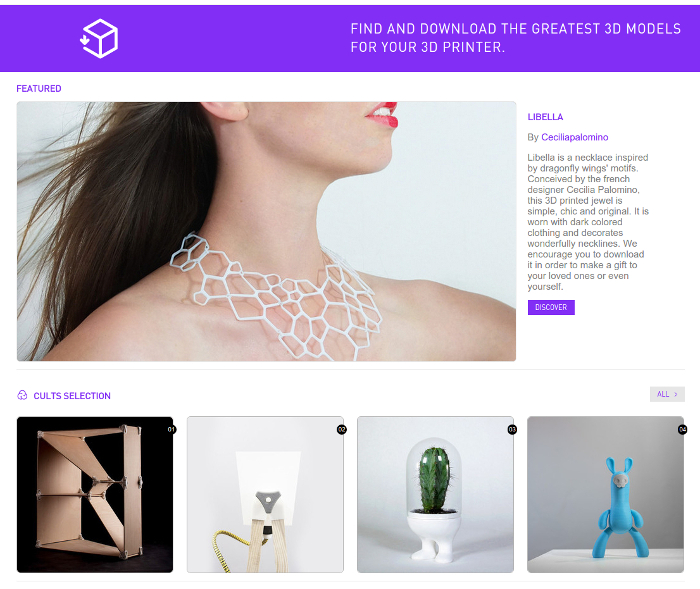
2 - Peopoly Phenom
The Peopoly Phenom offers truly massive print volumes almost unheard of in a jewelry 3D printer. For jewelers who want to produce many rings or other items at the same time, this large volume provides room for dozens of jewelry wax models. If you are in demand for jewelry and want to make as many as possible, then this high build volume is critical. nine0003
With high resolution 4K projection quality using MSLA technology, Phenom produces clear, precise and consistent jewelry shapes. MSLA uses elements of LED and LCD technology to produce fast, accurate and reproducible 3D jewelry printing.
For higher print speeds, premium Peopoly Noir is available.
The Phenom uses a Chitubox resin 3D slicer, useful if you've used it before on another printer. Overall, this is one of the best 3D jewelry printers and a great choice for those who want to make a large number of castable wax models of jewelry.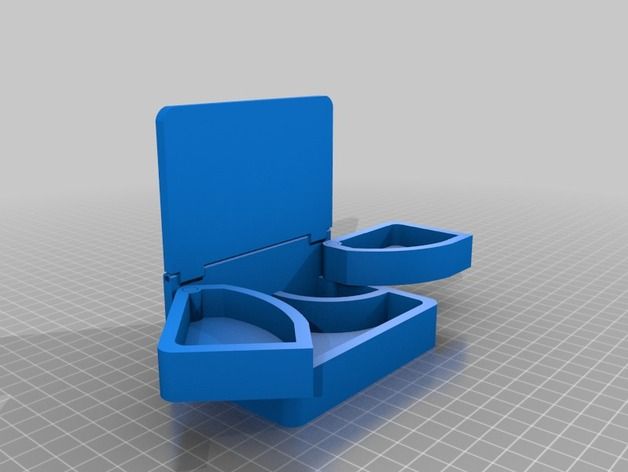 nine0003
nine0003
3 - Formlabs Form 3
Regarded as the gold standard for professional resin printing, the Form 3 is capable of fantastic precision, and its new custom light processing unit (LPU) uses lenses and mirrors to accurately print jewelry designs.
For the price, the Form 3 offers 25 micron resolution and very consistent and repeatable printing. Whether you're looking for a jewelry 3D printer capable of flawlessly printing the same design over and over again, or for custom complex designs, the Form 3 can handle both without a hitch. nine0003
Formlabs makes their own casting wax resins designed for jewelry with "clear settings, sharp teeth and smooth tangs". Therefore, the Formlabs workflow provides a complete wax-up jewelry manufacturing process, although the Form 3 is also great as a dental 3D printer in other industries.
Form 4 and several jewelery wax patterns printed on it.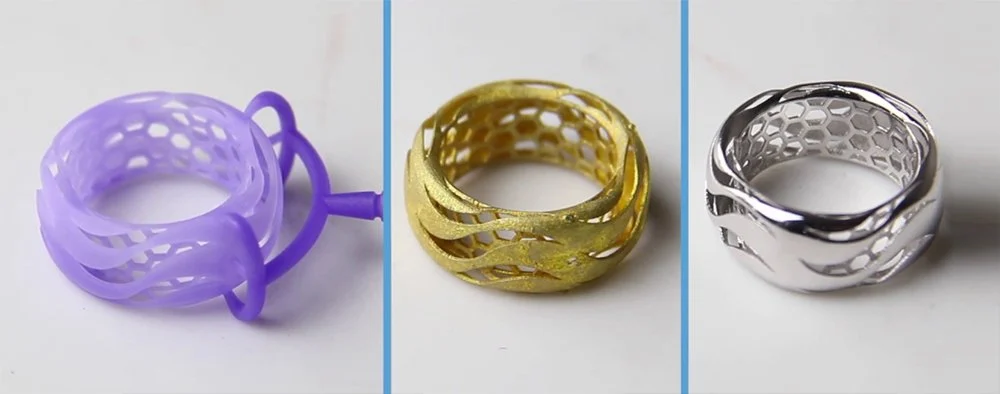
4 - Solidscape S325
Soliscape makes custom designed jewelry 3D printers, so any Solidscape printer you buy is optimized for jewelry printing. While other printers such as the Form 3 are designed to work in a variety of industries, the Solidscape S325 is designed exclusively for the jewelry industry. The
S325 is the cheapest of Solidscape's line of jewelry 3D printers. It provides high precision, inkjet wax patterns for accurate and efficient investment casting of precious metals. Solidscape emphasizes that all of their models are suitable for gold and platinum casting and will not expand or contract during the investment casting process. nine0003
The S325 is capable of producing 0.001 inch layers with 0.005 inch accuracy. All in all, as a dedicated jewelry 3D printer, Solidscape has a rich history in jewelry 3D printing and can be trusted to deliver high quality and accurate ring wax models time and time again.
5 - EnvisionTEC D4K Pro Jewelry 3D Printer
Described by EnvisionTEC as the highest resolution, professional-grade desktop 3D printer, as well as claiming the fastest speed, D4K is well suited for jewelry 3D printing. Speed and precision are key in jewelry manufacturing, and the printer's 4K UV DLP projector is capable of quickly creating crisp wax patterns for casting into stunning jewelry. nine0003
EnvisionTEC pioneered DLP 3D printing over a decade ago. Now their upgraded D4K Pro can achieve accuracy down to 25 microns in XY and 1 micron in Z.
The 3D Jewelry Printer works well with EnvisionTEC's WIC100 series wax material, which is used for burning and investment casting of precious jewelry. Although it is an industrial 3D printer costing over $10,000, large jewelers will find the D4K one of the best casting jewelry 3D printers. nine0003
envisiontec d4k jewelry 3d printer


